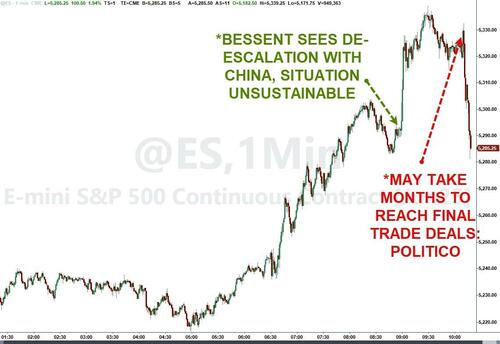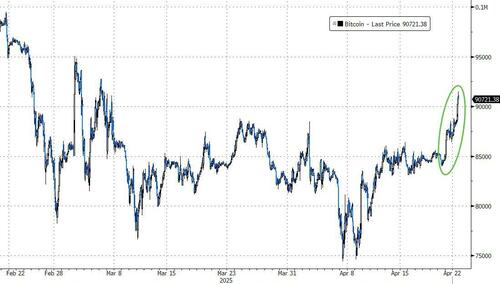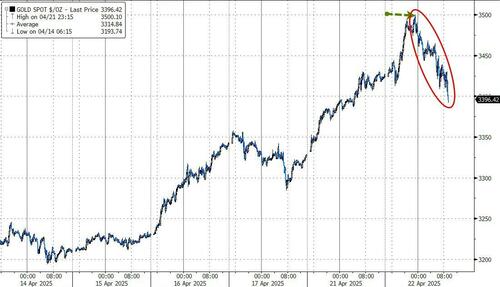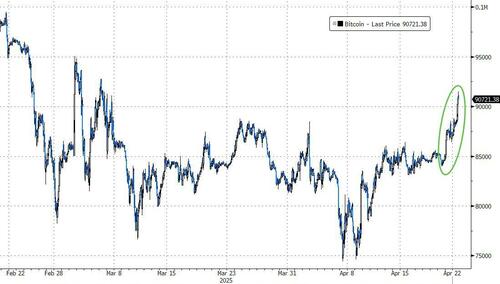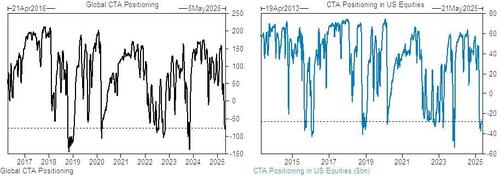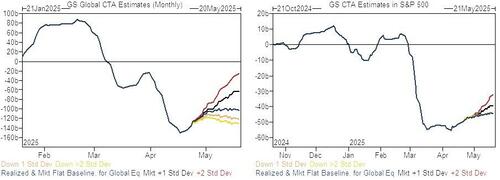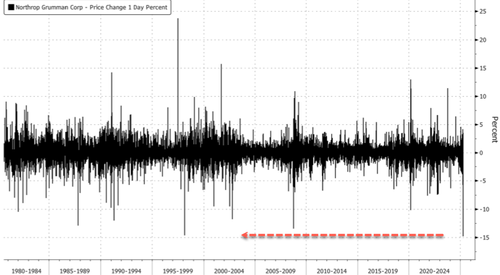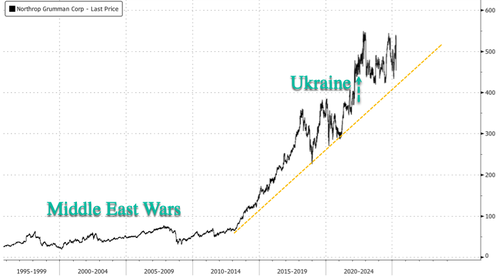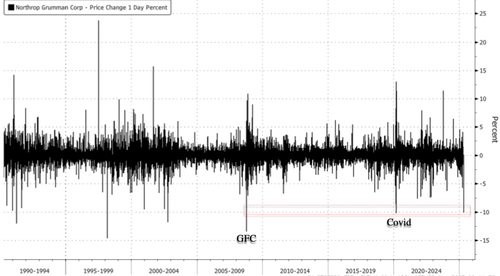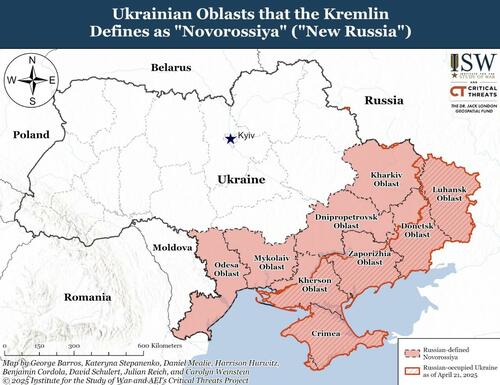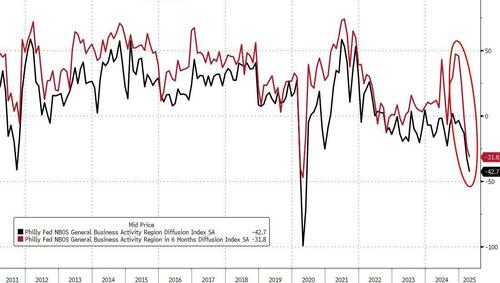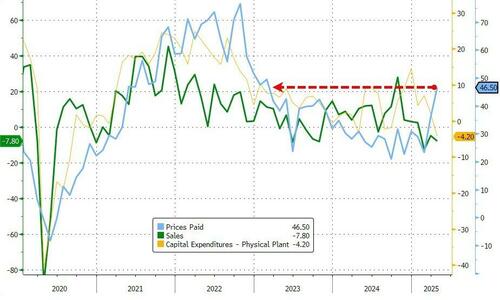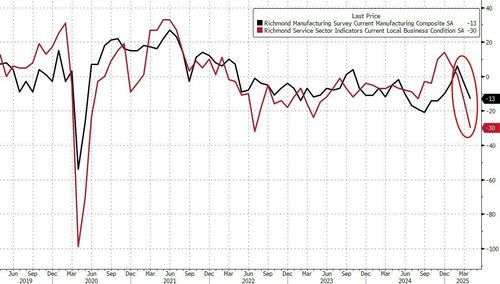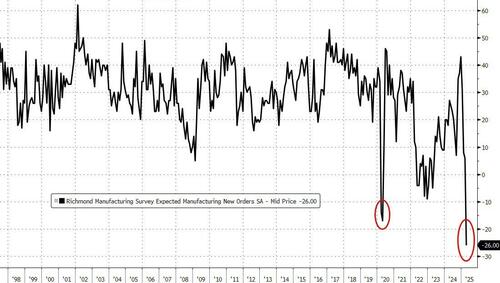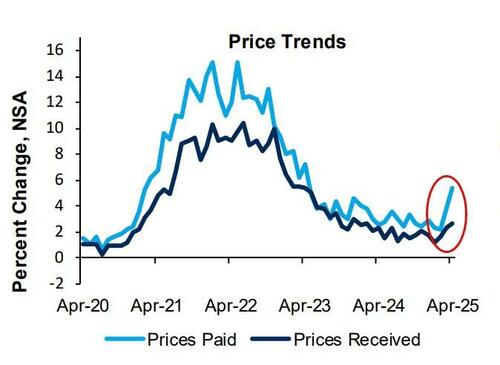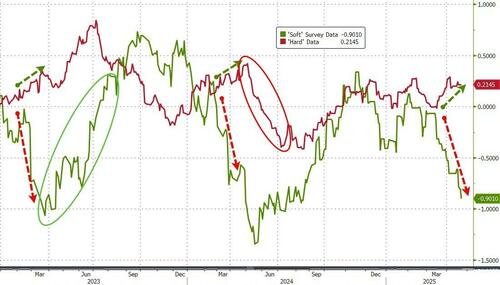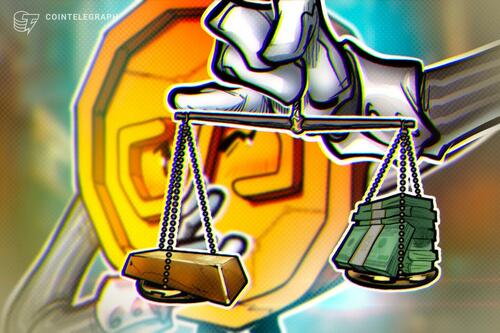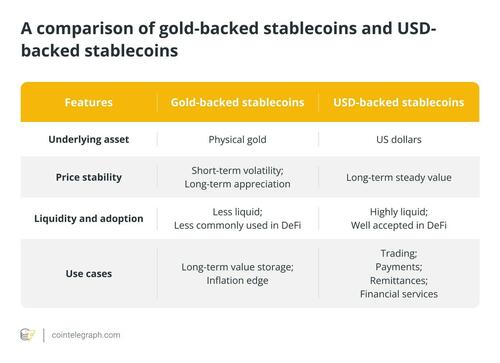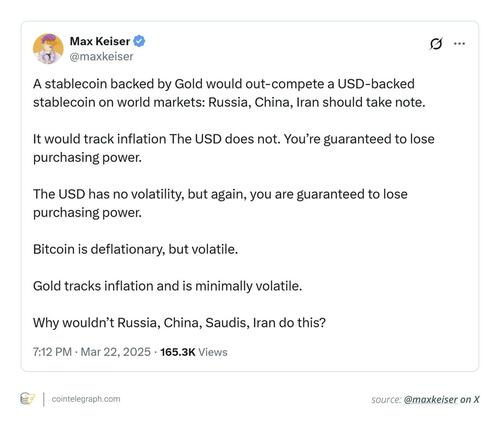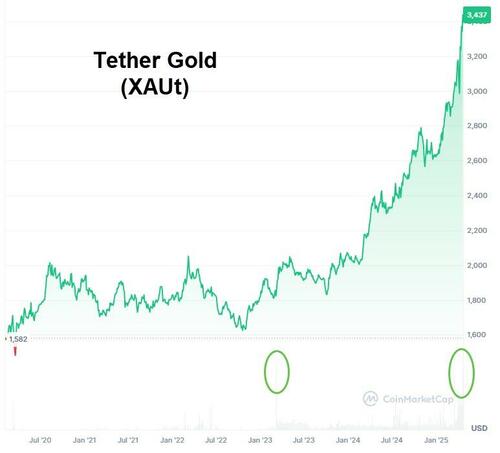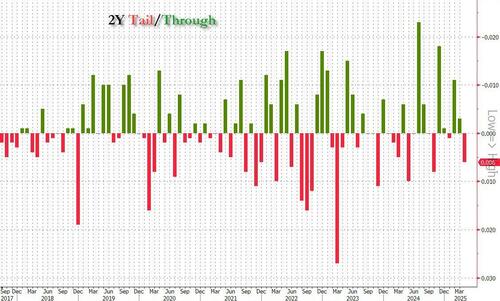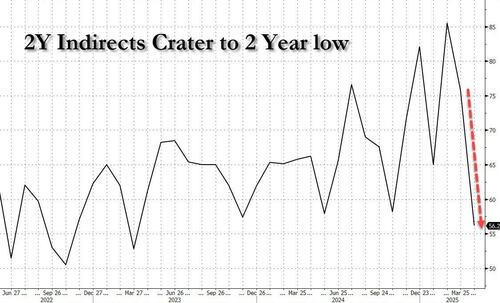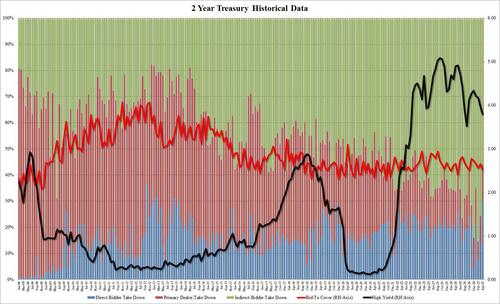In the name of tolerance, tolerance is being abolished; this is a real threat we face.
Distinction Matter - Subscribed Feeds
-
Site: The Unz Review* Warning: indelicate language. WHAT has Israel been up to since March 18, 2025, which was when the “genocidal entity” formally broke the nominal ceasefire agreement in Gaza? Oracular insight here is unnecessary. Israel has been trampling underfoot everything decent and good. Genocide is back. This time with President Trump in fawning agreement, playing procurer...
-
Site: The Unz ReviewNianli Ma, married to cyber expert and former Indiana University Professor, Xiaofang Wang, spoke out for the first time since the couple’s abrupt dismissals from Indiana University and a raid of their homes by the FBI. Ma said, “I feel trapped in a constant state of worry and sadness. What have we done to deserve...
-
Site: The Unz ReviewThere cannot be a peace deal when President Trump only proposes that Russia keep Crimea, which Russia did not take in war but in an unanimous vote of the population in Crimea to be reunited with Russia from which Crimea had been torn. Trump has not included in the deal Russian Donbas, which also voted...
-
Site: The Remnant Newspaper
-
Site: Public Discourse
Editor’s Note: This essay is part of a week-long series of essays at Public Discourse reflecting on Pope Francis’s pontificate, his legacy, and the Catholic Church’s future.
What is the hermeneutical key to the pontificate of Pope Francis?
Kierkegaard famously quipped, “Life can only be understood backward, but it must be lived forward.”
I propose that to understand Pope Francis, it helps to go backward, beginning near the end of his pontificate by focusing on his final encyclical, Dilexit Nos. This is a challenge for many, since Dilexit Nos has received comparatively little attention—whether in the media, the Church, or among Catholic intellectuals.
In Dilexit Nos, Pope Francis focuses on the “heart,” especially the way our participation in the dominant culture wounds the heart in a hidden, unnoticed manner. As an antidote, Pope Francis proposes participation in popular pious practices, specifically the devotion to the Sacred Heart. God’s grace can work on us through these practices, to heal our hearts, shaping us in mercy and love by drawing us closer to the heart of Jesus.
That the heart would be a major theme of his pontificate was not obvious on March 13, 2013, when Jorge Mario Bergoglio, S.J., until then the Cardinal Archbishop of Buenos Aires, was introduced as the new pope. What was more obvious then was that Pope Francis had his own style: simple white robes, leading the people in familiar prayers (an Our Father, Hail Mary, and Glory Be), and carrying himself with a casual intimacy. Immediately after being elected, he took the bus with the cardinals to gather his personal belongings, and he declined to live in the Apostolic Palace. His message seemed to be, “Live more simply.”
A Pope of Many Purposes
Many noticed early on that Pope Francis proposed a distinctive view of the church. Rather than emphasizing the church as a sacramental reality imbued with the presence of God, or a conception of the church as a pilgrim people, Pope Francis voiced a preference for the church as a field hospital with a battlefield task: Heal the wounds! Start from the ground up. Encounter those on the margins. Accompany those who feel left out.
Some have questioned at times whether the message of Pope Francis was distinctively Catholic or Christian. Were his teachings based on the Gospels or the life of Jesus? After all, the major writings of Pope Francis, including his social encyclicals Laudato Si’ and Fratelli Tutti, were addressed to “all people of good will,” and their tone was, at times, quite similar to that of documents produced by secular state agencies or of similar contemporary documents motivated by social justice. Francis’s writings emphasized promoting inclusive societies; saving the rainforests; caring for the earth; encouraging global solidarity; building a peaceful world; and avoiding bad things like selfishness, racism, poverty, the prevalence of a market logic based solely on profit, and the culture of waste.
But accounts of the pontificate of Francis that aim to go beneath the surface will emphasize deeper influences: St. Francis of Assisi, the ideas of Romano Guardini (the philosopher and theologian who was the topic of Bergoglio’s unfinished doctoral dissertation), or the Argentine movement known as the “theology of the people.” Others will point to his 2013 Apostolic Exhortation, The Joy of the Gospel—especially the section of Chapter 4 titled “The common good and peace in society”—as the blueprint for his pontificate and the key to understanding his purposes. To be sure, any account of the pontificate of Pope Francis must include each of these.
Recovering and Transforming Our Hearts
Still, one might wonder: What purpose united the various activities of Pope Francis? I contend that one finds it in Dilexit Nos.
Dilexit Nos: On the Human and Divine Love of the Heart of Jesus Christ, was promulgated less than two weeks before the 2024 U.S. presidential election—just as Donald Trump sat down for an interview with podcaster Joe Rogan, and as thousands of Beyoncé fans showed up for what the media told them would be a free concert, but which turned out to be a five-minute speech by Beyoncé endorsing Kamala Harris at a rally for “reproductive freedom.” It’s not surprising that at the time, the media were focused almost completely on matters related to the U.S. elections (including the kerfuffle of angry Beyoncé fans who felt they had been misled). Just before the elections, few had the patience to attend to a long encyclical from an aging pope that proposed to revive seventeenth-century devotional practices. Pope Francis died less than six months after promulgating it.
Pope Francis brings the encyclical’s central theme into focus by calling for a retrieval of the devotion to the Sacred Heart, a practice that, in earlier centuries, had been dear to the Jesuits.
At first, we might think that Catholic devotion to the Sacred Heart is an activity for grandmothers. Indeed, in the encyclical Pope Francis tells a sweet story of baking cookies with his grandmother. But the point of his story is not sentimental. Pope Francis tells us that, “In the dialect we spoke, those cookies were called ‘lies.’ . . . My grandmother explained why: ‘Like lies, those cookies look big, but are empty inside; they are false, unreal.’” With this story, the pope encourages his readers to examine our own hearts and the ways in which we are complicit with the distortions and alienation of contemporary culture—a culture that seems full of promises, but is actually quite empty. In this age of artificial intelligence, when there is a tendency to overemphasize the rational-technological dimension, Pope Francis worries that we act as serial consumers: hectic, bombarded by technology, and with little room in our hearts.
While there may be no algorithm to measure the size of one’s figurative heart, we are all regrettably familiar with—and even experience in ourselves—the broken heart, the closed heart, the empty heart, the devious heart, the perverse heart, and those who are totally heartless. Pope Francis writes, “If we devalue the heart, we also devalue what it means to speak from the heart, to act with the heart, to cultivate and heal the heart. If we fail to appreciate the specificity of the heart, we miss the messages that the mind alone cannot communicate; we miss out on the richness of our encounters with others; we miss out on poetry.”
Pope Francis aims to awaken us to the subtle ways in which each of us actively participates in and perpetuates disordered, heartless, and sinful social structures.
The pope calls for a transformation in our hearts. He recommends several quite specific practices. A few of these might seem sentimental: more poetry readings; more time considering the flowers and the birds; more time baking cookies with Grandma’s recipe. But the central practices Pope Francis recommends are a postmodern retrieval of traditional Catholic devotions to the Sacred Heart: devoting oneself each Thursday to contemplative worship in a holy hour before the Blessed Eucharist, and receiving the Eucharist on the First Friday of each month.
In Dilexit Nos, Pope Francis makes reference to the Aparecida Document from the Fifth General Conference of the Latin American and Caribbean Bishops. That 2007 document praises “the soul of the Latin American peoples,” describing the faith in that part of the world as “a people’s Catholicism.” It has a deeply inculturated popular piety that is a “precious treasure of the Catholic Church in Latin America” and “the most valuable dimension of Latin American culture.” It is not clear whether Pope Francis endorses all of the claims made in the Aparecida Document. For example, we might raise a question: Is it true that the popular piety of Latin America manifests a thirst for God that “only the simple and poor can know”? Is it possible for a middle-class person or a wealthy person to have a heart that thirsts for God? Pope Francis does not quote from or endorse this aspect of the Aparecida Document. Instead, he seems to suggest that the popular piety of the poor in Latin America can be a model of hearts that are open to God’s grace, and that selfish hearts can be transformed by participating in and retrieving once-popular pious practices.
Pope Francis concludes Dilexit Nos by stating explicitly that the teachings in his social encyclicals, Laudato Si’ and Fratelli Tutti, are “not unrelated to our encounter with the love of Jesus Christ. For it is by drinking of that same love that we become capable of forging bonds of fraternity, of recognizing the dignity of each human being, and of working together to care for our common home.”
In Dilexit Nos Pope Francis proposes that, in order to receive the teaching of the Church and to participate more fully in divine grace and mercy, we need the right sort of heart—and a change of heart comes with a change in our practices.
The teaching is not a call for a better theory of social harmony. Instead, Pope Francis is calling us to prepare for Friday, June 27th, 2025—the 350th anniversary of the apparitions of the Sacred Heart of Jesus to St. Margaret Mary Alacoque—by reviving the practice of a holy hour each Thursday and the promotion of Eucharistic communion on the first Friday of each month.
Once we understand that the teaching of Dilexit Nos on the importance of the heart is the key to interpreting Pope Francis’s earlier encyclicals, we see that, by extension, the heart is central to his entire pontificate. Indeed, his first encyclical, Lumen Fidei, promulgated in the first months of his pontificate, states, “In the Bible, the heart is the core of the human person, where all his or her different dimensions intersect: body and spirit, interiority and openness to the world and to others, intellect, will, and affectivity. If the heart is capable of holding all these dimensions together, it is because it is where we become open to truth and love, where we let them touch us and deeply transform us.”
Some will point to The Joy of the Gospel as the text which holds the interpretive key to Pope Francis’s pontificate. To be sure, there is something to this claim. In response, I would point to the very first line: “The joy of the gospel fills the hearts and lives of all who encounter Jesus.” In other words, the joy in The Joy of the Gospel is a joyous heart.
To those who propose that St. Francis of Assisi is central, I respond (again) that what is important is the spirituality of the heart we find in St. Francis. Laudato Si’ begins by quoting the beautiful song of St. Francis and then contrasting the poetic spirituality of St. Francis with the violence and distortions in our hearts.
At its deepest level, Laudato Si’ is not about environmental policy; it is a diagnosis of our malformed hearts. This diagnosis unfolds in Chapter 3, the deepest chapter of Laudato Si’, where the pope draws from Guardini’s account of the distortions of the human heart that come about from the dominant technocratic paradigm. Guardini, in his most famous book, The Lord, wrote, “None of the great things in human life springs from the intellect; every one of them issues from the heart and its love.”
Just as R. J. Snell has argued that John Paul II’s pontificate is best understood as “the pontificate of the person,” I propose that the papacy of Pope Francis is best understood as “the pontificate of the heart.”
Image by Ashwin Vaswani and sourced via Unsplash.
-
Site: The Remnant Newspaper - Remnant ArticlesA number of people have asked why I have not yet commented on the death of Francis (Easter Monday, April 21, 2025). In point of fact, I did comment. Within hours of his death, I had posted a prayer for the repose of his soul.
-
Site: Novus Motus LiturgicusOn Friday, February 14th, the feast of Saint Valentine, Sacred Heart of Jesus Parish in Grand Rapids, MI welcomed Gesualdo Six from London to sing a choral meditation and Mass for the parish's yearlong Palestrina500 festival.The choral meditation consisted of:Palestrina: Litaniae de Beata Virgine Maria a6Antoine Brumel: Sub tuum praesidiumJosquin des Prez: O Virgo prudentissimaJohannes Ockeghem: Peter Kwasniewskihttp://www.blogger.com/profile/02068005370670549612noreply@blogger.com0
-
Site: LifeNews
The latest report from the pro-abortion Guttmacher organization indicates what many pro-lifers have feared for Virginia since the Dobbs decision in 2022. Abortion promoters are using the lack of protective pro-life laws and the virtually unregulated practice of abortion in the first two trimesters of pregnancy to turn the Commonwealth into a destination for abortions.
According to the report the number of abortions in Virginia has increased by 4,300 and assumes that that number includes many women who may have traveled here from out of state.
The state has seen six new abortion facilities open or go into development since 2022 bringing the total number to 23.
Get the latest pro-life news and information on X (Twitter). Follow @LifeNewsHQ//
Virginia removed the majority of protective laws for unborn children and their mothers in 2020 opening a door to the dangerously unregulated situation we find ourselves in today. The current laws allow non-doctors to perform abortions or prescribe abortion chemicals and no office visit is required. Online prescriptions mean that a women receiving these drugs may not even be pregnant.
“The new numbers suggest a deeply alarming trend and the threatened unlimited abortion amendment that has already passed once in the General Assembly will mean that Virginia will only see more unborn children lose their lives and mothers put at risk from unscrupulous abortion promoters,” said Olivia Gans Turner, president of VSHL.
Virginia’s elections this year will allow concerned people to halt the threat of the abortion amendment, the so called Right to Reproductive Freedom Act, and send a message that Virginians do not want our home to become an abortion destination. [For more on the Right to Reproductive Freedom Act, see The 2025 General Assembly Comes to a Close and the Pro-life Movement Faces the Facts – Virginia Society for Human Life.]

The post Virginia Sees Abortions Increase Significantly as More Babies are Killed appeared first on LifeNews.com.
-
Site: LifeNews
Minnesota Citizens Concerned for Life (MCCL) is backing under Minnesota law legislation to restore protection for born-alive infants, including those who survive abortion and those with disabilities. But many people find it hard to believe that protection was ever lost in the first place.
Did Minnesota lawmakers and Gov. Tim Walz really repeal the right to lifesaving care for born-alive infants? Is it true that babies can be left to die? Here are the facts you need to know.
What was Minnesota’s previous law?
Minnesota’s bipartisan Born Alive Infants Protection Act (MN Statutes 145.423) was first enacted in 1976 and updated in 2015, when it was signed into law by Democratic Gov. Mark Dayton. It protected babies who survive abortion procedures and are born alive. Among other things, the law required that “reasonable measures consistent with good medical practice” be taken “to preserve the life and health of the born alive infant.”
LifeNews is on GETTR. Please follow us for the latest pro-life news
What did Walz and the legislature do?
In 2023, a narrow DFL-only majority in the legislature passed—and Gov. Walz signed— an omnibus bill (SF 2995) that repealed or amended numerous laws relating to abortion, including the Born Alive Infants Protection Act.
Among the changes: No longer must reasonable measures be taken “to preserve the life and health of the born alive infant.” Instead, measures must be taken only to “care for the infant who is born alive.” This was repeatedly described by the bill’s House author, Rep. Tina Liebling, as “comfort” care, as opposed to lifesaving care.
In addition, part of the subdivision’s heading was changed from “medical care” to just “care.” And the law’s language was altered to no longer apply specifically to babies who survive abortion, but rather to all babies who are born alive.
The new version also eliminates the civil penalties for violating the law, and it repeals the previous requirement that cases of born-alive infants—and the measures taken or not taken to care for them—be reported to the Minnesota Department of Health (MDH).
What do those changes mean?
Whereas Minnesota’s previous law guaranteed medically appropriate care that could save infants’ lives, the new law does not. Under the new language, viable babies can be set aside, with only comfort care (i.e., care that keeps patients temporarily comfortable but does not try to save their lives), and allowed to die. This policy is a threat to “unwanted” babies born in the context of abortion, but it also endangers other infants, especially those born with disabilities, whose lives are often devalued.
It’s true that the law retains previous language affirming that born-alive infants are human persons who deserve protection. But recognizing personhood is not the same as requiring any particular standard of care. Moreover, the new version of Minnesota’s policy removes the penalties for violating it, undermining any effective enforcement. And it gets worse: The public will no longer even know about born-alive infants because Walz and the legislature repealed the reporting requirement. Minnesotans are being kept in the dark.
What do the new law’s defenders say?
Lawmakers and advocates who support the changes— and journalists who repeat their claims—have usually defended them this way: The previous law, they say, mandated extraordinary and burdensome measures to try to prolong life even when those measures were futile. They say that such a mandate was not compassionate for grieving families whose babies would soon die.
The problem is that Minnesota’s previous law plainly did not require extraordinary or burdensome measures. Instead, it required only “reasonable measures consistent with good medical practice.” This allowed for different interventions depending on the situation. But it meant that you could not simply deny medically appropriate measures that would save infants’ lives. You could not just set babies aside to die.
Reports from the health department confirm that practitioners of abortion never thought Minnesota’s previous law required extraordinary measures. In 2015, for example, after the updated version of the Born Alive Infants Protection Act was enacted, MDH noted that some infants “were reported to have lethal fetal anomalies incompatible with life and thus no measures were taken to preserve the life of these infants” (emphasis added).Do babies really survive abortion?
Yes. In most years since reporting began in 2015, between three and five born-alive abortion survivors have been reported to MDH. Nationwide, the Centers for Disease Control (CDC) has reported that, between 2003 and 2014, at least 143 babies were born alive after abortion (the actual number, the CDC acknowledges, may be higher). Hundreds of abortion survivors who have lived are now part of the Abortion Survivors Network.
For answers to some further questions about the lack of protection for born-alive infants—and for supporting documentation—visit mccl.org/extreme.
LifeNews.com Note: Paul Stark is a member of the staff of Minnesota Citizens Concerned for Life, a statewide pro-life group.

The post Tim Walz Signed a Law Allowing Infanticide, Letting Babies Die Who Survive Abortions appeared first on LifeNews.com.
-
Site: Rorate CaeliFribourg, April 21, 2025Having learned of the passing from this world of Pope Francis today, April 21, 2025, the Priestly Fraternity of St. Peter is ardently praying for the repose of his soul. As the Servant of the Servants of God, he often humbly asked to be remembered in the prayers of those who met him. We are indebted to him for being a Father toward our Fraternity in New Catholichttp://www.blogger.com/profile/04118576661605931910noreply@blogger.com
-
Site: Fr. Z's BlogUp came the sun at 06:17. Down goeth the sun at 20:01. The Ave Maria is in the 20:15 cycle for the Curia, which is in the state of Sede Vacante, so business has slowed down. Or it should have. … Read More →
-
Site: Euthanasia Prevention Coalition
This article was published by National Review Online on April 22, 2025.
New Jersey has started an admirable program to prevent suicide. From the NJ.com story:
A new state program will send trained mental health professionals and people with lived experience to respond to adults who contact the 988 Suicide and Crisis Lifeline.
The Mobile Crisis Outreach Teams, which consist of one peer and one professional, will be dispatched through the state’s 988 Suicide and Crisis Lifeline centers to help adults struggling with mental illness and substance use disorder, without the need for police.
“Today’s announcement underscores that — in New Jersey — help is truly only a phone call or text message away,” Gov. Phil Murphy said in a statement announcing the program’s launch. That’s great. Too bad the effort won’t apply to all suicides.
You see, assisted suicide is legal in New Jersey. The self-terminations of people with a prognosis of six months or less ceases to be “suicide” when facilitated by a doctor. Indeed, the terminology of the law has been engineered to create a false narrative: The request for suicide facilitation is redefined as a desire to “end my life in a humane and dignified manner.” The drugs used in prescribed intentional lethal overdoses are renamed “medications.” Even the cause of death in such cases will be mendaciously reported as “natural” on death certificates when the real reason is the ingestion of barbiturates.
Suicide is suicide — it is a what, not a why. The state can claim it wants to prevent suicides, but people who ask for assisted suicide rarely (if ever) receive these important interventions — even though suicide prevention is supposed to be an essential hospice service.
This is so wrong. Statistics demonstrate that suicidal terminally ill patients opt for assisted suicide generally because of existential issues, such as fears of burdening family, losing dignity, about how one will be remembered, and so on. It isn’t about untreatable pain (nor do laws so require). These are important matters that should and can be ameliorated through intensive social interventions like those that will be offered to other suicidal people under the New Jersey plan. Moreover, studies have demonstrated that legalization may increase other suicides, which would seem to undermine suicide prevention efforts generally.
Because New Jersey has legalized assisted suicide, its prevention program will not be universally applied. That is akin to saying to smokers, “Don’t smoke,” but then adding, “However, if you do, use a filter cigarette.” The anti-suicide message is utterly inconsistent and, therefore, likely to be less effective. -
Site: OnePeterFive
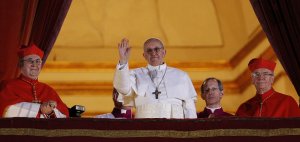
Historically speaking, the Catholic Church has never been immune to hardships, suffering, and scandal. It’s easy to assume a diminutive approach that the events of the last twelve years, even more so the past sixty years, are unique to Church history. If we suppress our emotional attachment to the events of the past century, and examine the persecutions inflicted on the Church over the past 2000…
-
Site: AsiaNews.itAccording to a new report from the UN Office on Drugs and Crime, criminal gangs linked to Southeast Asia's online scam centres are expanding their activities into Africa, Latin America, and other vulnerable regions thanks to technological developments. The business – described as a 'cancer' by experts – generates almost US$ 40 billion a year in profits. Online platforms that are only accessible privately and gambling sites are at the heart of this illegal ecosystem.
-
Site: LifeNews
The Trump administration is exploring a $5,000 “baby bonus” for new mothers as part of a broader effort to reverse declining U.S. birth rates.
The proposal, still in early stages, aims to provide financial relief to families and encourage higher birth and marriage rates, aligning with concerns raised by administration officials and allies about population decline.
The initiative, reported Tuesday by The New York Times, has been discussed in recent White House meetings with policy experts and advocates focused on raising birth rates. The cash payment would be granted to American mothers after delivery, though details such as funding and eligibility remain unclear.
REACH PRO-LIFE PEOPLE WORLDWIDE! Advertise with LifeNews to reach hundreds of thousands of pro-life readers every week. Contact us today.
Other ideas under consideration include expanding the child tax credit, set to expire at the end of 2025, which could revert to $1,000 per child if Congress and President Donald Trump do not act.
Vice President JD Vance has been a vocal proponent of addressing declining birth rates, a trend he highlighted during his 2021 Senate campaign and the 2024 election cycle.
U.S. birth rates, which rose slightly in 2024, have fallen from 3.65 births per woman in 1960 to 1.66 in recent years, raising concerns about an aging workforce and economic sustainability. Billionaire Elon Musk, a Trump ally, has warned that population decline could lead to the collapse of civilization, a sentiment echoed in some administration circles.
Critics argue the baby bonus may face logistical and political hurdles, including securing congressional approval and addressing concerns about affordability. Supporters, however, see it as a bold step to support families amid rising costs. The White House has not publicly confirmed the proposal, and officials did not immediately respond to requests for comment.
The discussions come as the administration navigates a range of domestic priorities, with birth rate policies emerging as a key focus. While no formal plan has been announced, the baby bonus idea has sparked debate online, with some praising its potential to ease financial burdens and others questioning its feasibility.

The post Trump Administration Eyes $5,000 Baby Bonus to Boost Birth Rates appeared first on LifeNews.com.
-
Site: Edward FeserLet us pray for the repose of the soul of Pope Francis. We ought to pray no less fervently that God in His mercy will bless His Church with a new pope of the kind she most needs at this time in her history. As the cardinals begin to think about a successor, it is appropriate for them, and for us, to recall that the first duty of any pope is to preserve undiluted the deposit of faith. It concerns sound doctrine even more than sound practice, because practice can be sound only when doctrine is sound. This is something those electing a new pope should always keep first and foremost in mind. But reminders are especially important today, when the Church faces greater doctrinal confusion than perhaps at any previous time.
The modern, liberal, secular world does not like to hear such reminders. When a pope dies, the press will, predictably, praise his personal kindness and concern for the poor and marginalized. In part, this is merely politeness of the kind appropriate when any person dies. But it also seems to be what is emphasized in commentary on who a pope’s successor ought to be. The liberal, secular world’s idea of a good pope is essentially a social worker with the personality of Mr. Rogers. It is impatient with the idea that the main reason the papacy exists is to preserve the doctrine handed down to us by the Apostles, and to unite the faithful around that doctrine.
This is, of course, in part because the modern world is hostile to many of the specifics of that doctrine. But in part it is because liberal, secular modernity is founded on the idea that religious doctrine of any kind is a matter of subjective and idiosyncratic opinion that has only private significance. The modern world cannot fathom how such mere opinion (as it sees it) could still seriously be thought the central concern of an office with the public visibility and influence of the papacy. Hence it focuses its attention on the philanthropic activities of popes, which it finds more understandable and useful.
But the world’s priorities are not, and never should be, the Church’s. She must always keep before her mind Christ’s Great Commission:
Go therefore and make disciples of all nations, baptizing them in the name of the Father and of the Son and of the Holy Spirit, teaching them to observe all that I have commanded you; and lo, I am with you always, to the close of the age. (Matthew 28:19-20)
And popes must always keep before their minds Christ’s words to St. Peter:
Simon, Simon, behold, Satan demanded to have you, that he might sift you like wheat, but I have prayed for you that your faith may not fail; and when you have turned again, strengthen your brethren. (Luke 22:31-32)
Christ’s command is to convert the world to his teaching, the deposit of faith. Peter’s commission is to preserve that faith and confirm his brethren in it. Naturally, that is not because doctrine is an end in itself. As the Church’s Code of Canon Law famously emphasizes, the salvation of souls is her supreme law. But the point is precisely that sound doctrine is the necessary prerequisite of the salvation of souls. Christ’s commission was not “Go therefore and advance social justice in all nations.” He did not say to Peter “I have prayed for you, that you may reach out to the marginalized.” That is not because social justice and reaching out to the marginalized are not important. It is because unless you get doctrine right, you are not going to understand what true social justice amounts to, and you are not going to know what you should be doing for the marginalized once you’ve reached out to them.
The priority of doctrine makes perfect sense when one properly understands the nature of the will and of the actions that flow from it. As Pope Leo XIII taught, following St. Thomas Aquinas:
The will cannot proceed to act until it is enlightened by the knowledge possessed by the intellect. In other words, the good wished by the will is necessarily good in so far as it is known by the intellect; and this the more, because in all voluntary acts choice is subsequent to a judgment upon the truth of the good presented, declaring to which good preference should be given. No sensible man can doubt that judgment is an act of reason, not of the will. The end, or object, both of the rational will and of its liberty is that good only which is in conformity with reason. (Libertas 5)
Action follows from the will, and the will pursues what the intellect judges to be good. Hence we cannot will rightly, and our actions will not reliably be good in their effects, unless the intellect’s judgements are correct. Modern people are used to thinking in clichés to the effect that what matters is not what you believe, but rather doing the right thing and having a good will. But the reality is that if what you believe is false, your will cannot be aimed at what is actually good (even if you are not culpable for the fact), and what you do will not be the right thing except by accident. Hence sound doctrine is crucial to willing and acting rightly.
This makes it intelligible why, though schism is a very grave sin, Aquinas teaches that heresy is even worse (Summa Theologiae II-II.39.2). Catholics must remain in communion with the pope, but precisely because the pope’s job is to preserve sound doctrine. It’s not that we must avoid heresy so that we will avoid schism; rather, the point of avoiding schism is to avoid heresy.
It also makes it intelligible why papal infallibility concerns only doctrine, and not a pope’s personal moral character. The Church does not say that a pope cannot do bad things, or that he cannot have a bad will. It claims only that, when he formally defines a matter of doctrine ex cathedra, in a manner intended to be absolutely final and definitive, he will not err.
It is no surprise, then, that the duty of popes to preserve the deposit of faith has been repeatedly emphasized in Catholic tradition. Here are several examples:
The first condition of salvation is to keep the norm of the true faith and in no way to deviate from the established doctrine of the Fathers. For it is impossible that the words of Our Lord Jesus Christ who said, “Thou art Peter, and upon this rock I will build my Church,” should not be verified. (Formula of Pope St. Hormisdas)
For the Holy Spirit was promised to the successors of Peter not so that they might, by his revelation, make known some new doctrine, but that, by his assistance, they might religiously guard and faithfully expound the revelation or deposit of faith transmitted by the apostles. (First Vatican Council, Session 4, Chapter 4)
The living teaching office of the Church… is not above the word of God, but serves it, teaching only what has been handed on, listening to it devoutly, guarding it scrupulously and explaining it faithfully in accord with a divine commission and with the help of the Holy Spirit. (Second Vatican Council, Dei Verbum, Chapter II)
The mission of Peter and his successors is to establish and authoritatively confirm what the Church has received and believed from the beginning, what the apostles taught, what Sacred Scripture and Christian Tradition have determined as the object of faith and the Christian norm of life. (Pope St. John Paul II, Catechesis of March 10, 1993)
The Pope is not an absolute monarch whose thoughts and desires are law. On the contrary: the Pope's ministry is a guarantee of obedience to Christ and to his Word. He must not proclaim his own ideas, but rather constantly bind himself and the Church to obedience to God's Word, in the face of every attempt to adapt it or water it down, and every form of opportunism… In his important decisions, he is bound to the great community of faith of all times, to the binding interpretations that have developed throughout the Church's pilgrimage. Thus, his power is not being above, but at the service of, the Word of God. It is incumbent upon him to ensure that this Word continues to be present in its greatness and to resound in its purity, so that it is not torn to pieces by continuous changes in usage. (Pope Benedict XVI, Homily for the Mass of Possession of the Chair of the Bishop of Rome, May 7, 2005)
This last statement, from Benedict XVI, is especially eloquent. And it reminds us that true humility in a pope entails a steadfast refusal to ignore or dilute or obfuscate the Church’s traditional teaching in any way, not even when others may delude themselves that doing so would be merciful or pastoral or better in line with the signs of the times.
May the cardinals take such reminders to heart as they deliberate. May they elect a man willing to live by, and indeed if necessary even die for, these noble words from the tradition. St. Peter, pray for us.
-
Site: LifeNews
On Monday, five days after the Wyoming Supreme Court heard oral arguments to decide whether District Judge Melissa Owens properly struck down the state’s protective “Life is a Human Right Act,” retired District Judge Thomas Campbell enjoined two state laws, one requiring abortion clinics to be licensed as ambulatory surgical centers and a second requiring ultrasounds and a 48-hour waiting period.
A spokesperson for Gov. Mark Gordon declined to comment on the ruling. “The state does not comment on active litigation,” the statement read.
Judge Campbell’s injunction will remain in place until his final ruling.
Judge Campbell was unpersuaded by the argument made earlier this month on behalf of House Bill 42 by Senior Assistant Attorney General John J. Woykovsky who defended the ultrasound law as a type of “informed consent.”
REACH PRO-LIFE PEOPLE WORLDWIDE! Advertise with LifeNews to reach hundreds of thousands of pro-life readers every week. Contact us today.
“Before a woman obtains a chemical abortion, she should have full information,” Woykovsky said. “And part of that information is an ability to visualize the fetus and the ability to hear the heartbeat.”
Reporting for Wyoming Public Radio, Chris Clements explained that Judge Campbell wrote
“The State Defendants assert that such practice could potentially identify ectopic pregnancies earlier; thus, generally promoting women’s health. However, the fact that only women seeking abortions would benefit, corrodes that argument. The same can be said for the mandatory forty-eight (48) waiting period provision. A period of reflection, as characterized by the State Defendants, serves no legitimate purpose and no evidence further supporting this argument is before the Court.”
Fundamentally, Campbell said that the state had failed to show that the clinic regulations and ultrasound requirement are “necessary, reasonable or advance a compelling government interest.”
Wyoming Health Access in Casper, the state’s only abortion clinic, and one of the plaintiffs, will resume surgical and chemical abortions.
At issue in Johnson v. Wyoming, which the state Supreme Court heard oral argument on last Wednesday, was the state’s law that safeguards unborn babies except when the woman’s life is at risk or in instances of rape and incest. A second law made Wyoming the first state after Dobbs toppled Roe to explicitly prohibit the use of medical [chemical] abortion.
In November 2024, Judge Melissa Owens, who reliably supports pro-abortion litigants, ruled that the abortion laws “will undermine the integrity of the medical profession by hamstringing the ability of physicians to provide evidence-based medicine to their patients,” according to Mead Gruver of the Associated Press.
“The crux” of Judge Owens’ ruling was that the 2012 constitutional amendment guarantees “the right of competent adults to make their own health care decisions,” and was at the heart of the argument made by the attorneys for those suing Wyoming’s laws. According to Gruver,
Wyoming Special Assistant Attorney General Jay Jerde argued in court that abortion is not health care. He also said that voters passed the amendment not to allow abortion but in response to the federal Affordable Care Act, and lawmakers may make “reasonable and necessary” restrictions under the amendment.
“This court is extremely deferential to the Legislature in terms of what laws are necessary,” Jerde told the five justices.
Maggie Mullen and Andrew Graham, writing for The Wyoming News, quoted and paraphrased Jerde at length:
“When you have an individual right that’s fundamental, when the state regulates, it has to have a compelling reason for doing so. And the restrictions imposed have to restrict the right to the minimum amount possible while still accomplishing the compelling purpose,” Jerde said.
But the right of individuals to make their own health care decisions, as specified in the state’s constitution, is not a fundamental right, Jerde said, because of how it is qualified by another section of the constitution that empowers the Legislature.
“The Legislature may determine reasonable and necessary restrictions on the rights granted under this section to protect the health and general welfare of the people or to accomplish the other purposes set forth in the Wyoming Constitution,” Section 38, Subsection C reads.
The breadth of what is “health care” was discussed often over the hour and a half long hearing.
“What about the slippery slope?” Justice John Fenn asked Peter Modlin.
“‘Health care decisions’ is a broad term, and if we determine that’s a fundamental right, it seems to me that there’s all kinds of — health care is a heavily regulated industry. It opens Pandora’s box on what is health care and what regulation can be made. Medical marijuana — I mean, you just go check down the list of so many different things that are reasonably regulated that this might turn that upside down.”
Modlin, who along with two other attorneys represents the plaintiffs, responded, “We would respectfully disagree.”
LifeNews.com Note: Dave Andrusko is the editor of National Right to Life News and an author and editor of several books on abortion topics. He frequently writes Today’s News and Views — an online opinion column on pro-life issues.

The post Wyoming Judge Blocks Pro-Life Laws, Abortion Center Will Resume Killing Babies appeared first on LifeNews.com.
-
Site: LifeNews
When Pope Francis first became head of the Church, I did some research on him.
I learned that, as a Cardinal in Argentina, he was quoted as saying, “Defend the unborn against abortion even if they persecute you, calumniate you, set traps for you, take you to court or kill you.”
Strong words from a man who valued the sacredness of life from the moment of conception to the instant of natural death. The late Holy Father was a champion of the marginalized—and no one is more marginalized in our society than the unborn child.
The pontiff also preached a “revolution of tenderness” which the pro-life movement lives out each day. Through its outreach to pregnant women in difficult circumstances, the movement offers mothers the hope and strength they need to carry on amidst trying times.
REACH PRO-LIFE PEOPLE WORLDWIDE! Advertise with LifeNews to reach hundreds of thousands of pro-life readers every week. Contact us today.
I also had a personal connection to Pope Francis. At a time when I was particularly worried and distraught, I sent him a letter asking for prayers. A Vatican representative responded by sending me a papal prayer card and a letter assuring me of the Holy Father’s prayers. I had the mementos framed and the display now hangs in my office—a constant reminder of Pope Francis’ kindness to me.
People around the world are grieving the loss of this Pope with a pastor’s heart. Let us pray that his successor will be equally devoted to defending the most defenseless among us.
LifeNews.com Note: Maria Gallagher is the Legislative Director and Political Action Committee Director for the Pennsylvania Pro-Life Federation and she has written and reported for various broadcast and print media outlets, including National Public Radio, CBS Radio, and AP Radio.

The post Pope Francis: “Defend the Unborn Against Abortion” appeared first on LifeNews.com.
-
Site: LifeNews
Illinois Gov. JB Pritzker is expanding his national profile and generating buzz around a potential 2028 presidential candidacy.
The two-term Illinois governor is the heir to the Hyatt hotel fortune, making him the richest governor in America’s history and the one of the richest elected officials in office. Pritzker’s billionaire status allows him to frequently bankrollDemocratic causes, giving him potential to be a formidable candidate.
The first of Pritzker’s upcoming high profile events is the New Hampshire Democrat Party’s largest fundraiser, the McIntyre-Shaheen 100 Club Dinner, where he will be delivering the keynote address on April 27. Pritzker is also slated to headline the Michigan Democratic Party Legacy Dinner in June.
REACH PRO-LIFE PEOPLE WORLDWIDE! Advertise with LifeNews to reach hundreds of thousands of pro-life readers every week. Contact us today.
The Illinois governor has been a power player for the Democratic Party for years. Kamala Harris’s presidential campaign even vetted him as a possible running mate in 2024. More recently, Pritzker was one of the party’s biggest donors to the Wisconsin Supreme Court election, second only behind George Soros.
Pritzker attended high-profile events all throughout March, headlining the Jim Owles Winter Pride Gala in New York City, as well as the Human Rights Campaign’s annual dinner in Los Angeles, sparking talks around his rumored presidential bid.
In recent weeks, the 60-year-old has intensified his attacks on the White House, adding onto his long history of fiercely opposing Trump. Pritzker blasted the Trump administration’s policies at a Chicago community event last week, claiming the president “wants to cut life-saving programs.” On April 9, Pritzker tore at Trump’s economic policies while speaking to high school members of the Future Farmers of America in Springfield, Illinois, referencing trade with Canada and Mexico being harmed through “a self-inflicted trade war.”
Despite dragging Trump’s policies and filling his calendar, Pritzker is yet to officially declare either a presidential bid or a run for a third term as Illinois’ governor.
“There is no doubt that he is going to run,” prominent Chicago Democrat Bill Daley, who served as President Bill Clinton’s commerce secretary and President Barack Obama’s chief of staff, told the Wall Street Journal. “The real question is whether he runs for re-election first or just runs for president.”
Daley went on to tell the publication that he would advise against a gubernatorial run with the possibility of crisis or scandal harming a gubernatorial campaign. Daley, whose brother and father were the two longest-serving mayors in Chicago history, said Pritzker’s fortune allows him to announce a presidential bid in 2026 and quickly hire the best talent available to staff his campaign.
Kathy Salvi, chair of the Illinois Republican Party, said there’s an “audible groan” from Illinois residents whenever his name is mentioned.
“He is hugely unpopular here in Illinois and that’s because we see him for who he is,” Salvi told the Daily Caller News Foundation. “He’s got a soft launch of his presidential bid in New Hampshire that just proves Illinois has just been a stepping stone for him to advance his personal ambition while we’re settled here with the heavy effect of his administration’s failed policies.”
Illinois politics could quickly steal the focus if Pritzker announces a presidential bid, highlighting some of the highesttaxes in the nation as well as the state’s shrinking population. Illinois is also home to Chicago’s violent crime rate and struggling education system.
Paul Vallas, a Democrat who served as the former Chicago public schools chief and past city budget director, claims that all the money being poured into Chicago’s education system is being “wasted.”
“Despite Illinois pouring billions more into education than prior to the pandemic — $44 billion in 2024 against $35 billion in 2019 — all the evidence points to that money being wasted,” Vallas, the runner-up for the 2023 Chicago mayoral election, wrote in a newsletter. “Fewer Illinois students can read or compute proficiently today than could five years ago and overall state test scores are abysmal. Rather than sound the alarm over the bleak findings, Governor J.B. Pritzker is calling Illinois’ dismal results an inspiring success.”
“People are voting with their feet,” Vallas told the Wall Street Journal. “The state is an absolute disaster.”
“We have drained Illinois businesses, families leaving, there’s not a person who I have met who says their children are looking for a future in Illinois,” Salvi told the DCNF. “JB Pritzker is in lockstep with the radical progressive left of his party and in any and everything that he’s meddling in is a bad result for America and certainly for Illinois.”
Still, Illinois has seen some improvements since Pritzker moved into the governor’s mansion in 2019. The state’s credit was stagnant for decades but has been upgraded three times since 2019, largely in part to Pritzker’s encouragementtowards quantum computing.
The Prairie State has also seen tighter gun restrictions as well as a drop in gun violence by over 40% according to a recent report by Northwestern University. Even still, a massive budget deficit looms over any potential bids for the White House.
“If JB Pritzker is on board with anything, then it’s common sense for common sense to go the opposite way,” Salvi told the DCNF. “We in Illinois can’t wait to get rid of (Pritzker’s policies). Save America from JB Pritzker.”
Pritzker’s office did not immediately respond to the DCNF for comment.
LifeNews Note: Andi Shae Napier writes for Daily Caller. Content created by The Daily Caller News Foundation is available without charge to any eligible news publisher that can provide a large audience.

The post Pro-Abortion Illinois Gov. JB Pritzker Ramps Up For Possible Presidential Bid appeared first on LifeNews.com.
-
Site: Zero HedgeStocks Reverse Bessent Gains On Report "It May Take Months To Hammer Out Final Trade Deals"Tyler Durden Tue, 04/22/2025 - 14:45
Update (1315ET): Shortly after the Bessent headlines moved stocks higher, Politco reports, while The White House is closing in on general agreements with Japan and India to stave off massive U.S. tariffs, it “may take months to hammer out the final deals,” said one of the people, conceding, “these things are complicated.”
Worse still, the optimism on the initial Bessent headlines has been erased as his actual comments were far less hopeful:
-
BESSENT: REBALANCING OF CHINA ECONOMY TOWARDS CONSUMPTION AND U.S. ECONOMY TOWARDS MANUFACTURING IN TWO TO THREE YEARS WOULD BE A 'HUGE WIN' - RTRS
-
BESSENT SAYS CHINA NEGOTIATIONS WILL BE A 'SLOG', DESCRIBES CURRENT BILATERAL TRADE SITUATION AS AN EMBARGO -PERSON WHO HEARD JP MORGAN SESSION
And just like that all the gains are gone...
* * *
US equity markets were already ramping higher, as yesterday's massive short pile up reversed and transformed into a squeeze (and force out of underexposed systematic funds), when an 11:58am ET headlines from Bloomberg, suggesting... well... the obvious, namely that the trade war with China is unsustainable in the long run according to Bessent...
- *BESSENT SEES DE-ESCALATION WITH CHINA, SITUATION UNSUSTAINABLE
... sent the US equities to session highs, up 3%...
...and reversing all of yesterday losses...
Started with a major short-squeeze...
The broad risk on move has sent the dollar higher, hitting the yen and euro, and pushing the USDJPY well above 141 (after sliding below 140 overnight) and the EURUSD has pushed to session lows, down 0.5%, while the US 10y yield is near its richest levels of the day, down 3bp. Gold is also sliding and was below $3400 after hitting a record high $3500 just a few hours earlier.
While gold is sliding, bitcoin topped $91,000...
Today's rally is already shaping up as the biggest since Trump’s tariff pivot on April 9. According to UBS S&T, money is flowing back into High Momentum {UBQQHMTM}, up 3.5%, with groups like M&A Banks {UBXXMABK}, up 2.8%, and AI Power {UBXXVOLT}, up 3.4%, benefitting. Some more notable flows:
-
A risk-on rotation is visible in Volatility {UBPTVOL}, up +2.5%, versus Quality {UBPTQLTY}, down 1.4%. Lower quality pockets are bouncing back most forcefully with De-SPACs {UBXXDSPC} up 3.5%, and Low Quality Credit {UBXXCRED} up 3%.
-
Tariff Losers {UBXXTTL}, up 2.8% stabilise, note the basket outperformed meaningfully during Monday's selloff in a sign of washed out positioning.
-
Defence Primes {UBXXPRME} are down 3%, though note about two-thirds of the move is driven by Northrop after disappointing earnings.
Another reason for today's meltup is the reversal of yesterday's meltdown, as panicked systematic funds scramble to buy. According to Goldman's Cullen Morgan, the systematic macro rebalance has effectively been completed, with global equity length going from approximately an 8 out of 10 during the YTD/February highs to a 1 out of 10 currently, of $53bn and representing a short position from CTA/trend followers and 1-yr low lengths from risk parity style + VA vol-control products.
As a result, Goldman now has CTAs as modeled buyers in every scenario over the next week and month.
-
-
Site: Zero HedgeNorthrop Grumman Crashes Most Since Dot-Com Era On "Unexpected" Stealth Bomber ChargeTyler Durden Tue, 04/22/2025 - 14:40
Update (1440ET):
Northrop Grumman shares are down around 14.5% in late afternoon trading—the steepest intraday decline since a 14.6% decline on March 9, 1998—following dismal first-quarter earnings and a downgraded outlook driven by surging costs tied to its B-21 stealth bomber program.
Shares have traded between $550 and $400 since Russia invaded Ukraine in early 2022, driven by expectations of surging weapons sales. One major problem for the military-industrial complex: If Trump resolves the conflict in Eastern Europe, it could spell trouble for defense stocks that have soared over the past few decades.
Here's the latest commentary on Northrop's earnings from Wall Street analysts (courtesy of Bloomberg):
Seaport Research analyst Richard Safran (buy, $599 price target)
-
"We were neutral into the print, but NOC's 1Q25 print was an overall disappointment due to an operating miss and a lower 2025 guide"
-
"We don't see much of a read-through to other defense names from NOC's 1Q25 print, and we think most of the issues were specific to NOC"
-
"Despite two fewer working days in the quarter, the 1Q25 print was disappointing all around with an unexpected charge on the B-21 program on higher than expected costs for the first LRIP lots. Investor sentiment on NOC was fairly positive into the print"
RBC Capital Markets analyst Ken Herbert (outperform, $575 price target)
-
"With the change in manufacturing process to eventually increase production, we expect investors to be focused on the potential for the B-21 program"
-
"We also expect a focus on new contract opportunities (e.g. F/A-XX) and NOC's international exposure, as well as NOC's portfolio positioning ahead of the FY26 presidential budget request"
JPMorgan analyst Seth Seifman (neutral, $515 price target)
- Notes that NOC's sales miss was mainly driven by aeronautics
For Goldman's first take on the earnings ... scroll to the end of the note.
* * *
Northrop Grumman shares plunged in premarket trading—much like the U.S. MQ-9 drones downed by Iran-backed Houthis—after the aerospace and defense contractor posted dismal first-quarter results and slashed its 2025 earnings forecast.
Northrop posted a profit of $481 million, or $3.32 per share, for the first quarter, down from $944 million, or $6.32 per share, in the same quarter one year ago. The staggering 47% per share profit drop was primarily due to loss provisions tied to the first production batch of B-21 stealth bombers.
Northrop explained more in an earnings release:
During the first quarter of 2025, we recognized a pre-tax loss of $477 million ($397 million after-tax or $2.74 per diluted share) across the five low-rate initial production (LRIP) options on the B-21 program at Aeronautics Systems. The loss largely relates to higher manufacturing costs primarily resulting from a process change made by the company to enable an accelerated production ramp, as well as increases in the projected cost and quantity of general procurement materials.
Sales for the quarter slid about 7% to $9.47 billion, missing the Bloomberg consensus projection of $9.93 billion.
Here's a snapshot of Northrop's weaker-than-expected results across most divisions, with a significant miss on EPS, free cash flow, and aeronautics margins...
EPS: $3.32 vs. $6.32 last year; missed estimate of $6.28
Revenue: $9.47B, down 6.6% y/y; missed estimate of $9.93B
Free Cash Flow: -$1.82B; well below estimate of -$599.3M
CapEx: $256M, down 5.2% y/y; missed estimate of $310.7M
Backlog: $92.8B
Segment Performance:
-
Sales: $2.81B, down 5.2% y/y; missed $3.12B estimate
-
Operating Loss: -$183M vs. $297M profit y/y; estimate was +$300.1M
Defense Systems:
-
Sales: $1.81B, up 28% y/y; slightly missed $1.86B estimate
-
Operating Income: $179M, +1.1% y/y; in line with $180.4M estimate
Mission Systems:
-
Sales: $2.81B, up 5.6% y/y; beat $2.77B estimate
-
Operating Income: $361M, down 4.5% y/y; missed $398M estimate
Space Systems:
-
Sales: $2.57B, down 30% y/y; missed $2.71B estimate
-
Operating Income: $283M, down 15% y/y; missed $293.5M estimate
Management also attributed the sales miss to a "previously disclosed wind-down of work on certain Space Systems programs," adding, "These decreases were partially offset by higher sales at Mission Systems and Defense Systems."
For the full year, Northrop reduced its outlook for operating income from a previous forecast but kept revenue guidance:
-
Adjusted EPS forecast: Cut to $24.95–$25.35 from $27.85–$28.25; below Bloomberg consensus of $28.12
-
Revenue forecast: Maintained at $42.00–$42.50 billion; in line with estimate of $42.32 billion
In premarket trading, Northrop shares plunged as much as 10%. If losses extend into the cash session, it would mark the stock's worst day since the early days of the Covid. Should losses exceed -10.15%, it would be the steepest single-day drop since October 10, 2008, when shares fell 13.45%.
Goldman's Noah Poponak, Anthony Valentini, and Connor Dessert provided clients with their first take on the earnings report:
Bottom Line: NOC 1Q25 results are below consensus. The company recorded a $(477)mn pre-tax loss in Aeronautics for the five LRIP options on the B-21 program. Total company segment EBIT excluding that charge is still below consensus. The company reiterated 2025 revenue guidance, and reiterated free cash, while reducing segment EBIT and EPS.
Details: 1Q25 fully adjusted EPS of $6.06 compares to FactSet consensus at $6.26 and our $6.53. Reported EPS is $3.32. Fully adjusted segment EBIT of $1.05bn is 3% below consensus. Revenue of $9.5bn is 5% below consensus with a slight beat in MS, but all other segments missed by MSD%+. The adjusted segment operating margin of 11.0% is 10bps below our estimate and 20bps below consensus. All segments beat on margin except Mission Systems, which missed by 160bps. NOC updated its 2025 guidance, including revenue of $42.0-$42.5bn (reiterated, vs. consensus at $42.3bn), segment operating income of $4.20-$4.35bn ($4.65-$4.80bn prior, vs. consensus at $4.82bn), EPS of $24.95-$25.35 ($27.85-$28.25 prior, vs. consensus at $28.11), and free cash flow of $2.85-$3.25bn (reiterated, vs. consensus at $3.10bn).
Our $527 12-month price target is based on a target relative (S&P 500) CY25E P/E of 1.1X. Key risks include (1) Geopolitics, (2) DoD spending priorities, (3) capital deployment, and (4) margins.
Despite the earnings miss and guidance cut, CEO Kathy Warden stated in a press release, "Global demand for our products remains strong, which is reflected in our record first quarter backlog, and we are making significant progress on our key programs."
* * *
Top products last week at ZeroHedge Store:
- ZeroHedge Waxed Canvas Hat
- IQ Biologix Astaxanthin (extremely potent anti-inflammatory)
- Anza SWAT Micarta Blued (made in the USA)
-
-
Site: Zero HedgePutin Offers To Halt Fighting Along Current Front Lines In Ukraine: ReportTyler Durden Tue, 04/22/2025 - 14:40
In a huge development, President Vladimir Putin has offered to halt his invasion of Ukraine across the current front line as part of ongoing efforts to work with US President Donald Trump toward reaching a permanent peace deal. This reportedly happened during ongoing dialogue with Trump's top envoys.
This is according to several sources which spoke to Financial Times, which wrote further in a Tuesday report, "The proposal is the first formal indication Putin has given since the war’s early months three years ago that Russia could step back from its maximalist demands to end the invasion."
"The Russian president told Steve Witkoff, Trump’s special envoy, during a meeting in St Petersburg earlier this month that Moscow could relinquish its claims to areas of four partly occupied Ukrainian regions that remain under Kyiv’s control, three of the people said," FT continues.
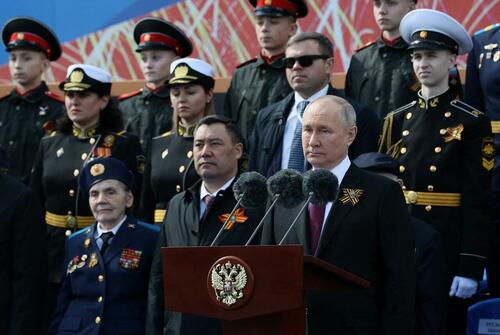 Via Sputnik/Reuters
Via Sputnik/Reuters
The Kremlin side has not publicly acknowledged this, and so the breaking report should be taken with a grain of salt, given this contradicts Putin's public stance that Russia will never relinquish the four territories which were declared part of the Russian Federation after the Moscow-backed referendums of Sept. 2022.
However, if Russian forces did simply halt their advance based on an agreed-upon freeze in fighting, there would be portions of these territories still not under Russian military control.
The FT report goes on, "The US has since floated ideas for a possible settlement that includes Washington recognizing Russian ownership of Ukraine’s Crimean peninsula, the people added, as well as at least acknowledging the Kremlin’s de facto control over the parts of the four regions it currently holds."
All of this is being reported hours after Ukraine's President Zelensky said he has rejected the possibility of ceding over Crimea, after the Trump administration reportedly offered the 'gift' to Putin of US recognition of Russian sovereignty over the strategic peninsula and home to the Russian navy's Black Sea fleet.
According to Ukrainian media:
Ukraine will not legally recognize Russia's occupation of Crimea under any circumstances, President Volodymyr Zelensky said during a briefing in Kyiv on April 22.
"There is nothing to talk about. This violates our Constitution. This is our territory, the territory of the people of Ukraine," Zelensky told reporters.
Zelensky added, "As soon as talks about Crimea and our sovereign territories begin, the talks enter the format that Russia wants — prolonging the war – because it will not be possible to agree on everything quickly."
Kiev has also recently accused Moscow of using negotiations as a smokescreen while in actuality prolonging the war, also coming off the 30-hour Eastern truce, which saw both sides accuse the other of many violations.
The Financial Times acknowledged this possibility, and the fact that Moscow is in the driver's seat related to any potential settlement that would end the conflict, in the following:
But European officials briefed on US efforts to end the war cautioned that Putin would probably use the apparent concession as bait to lure Trump into accepting Russia’s other demands and forcing them on Ukraine as a fait accompli. "There is a lot of pressure on Kyiv right now to give up on things so Trump can claim victory," one of them said.
The reality remains that if Zelensky can't so much as admit that Crimea will be permanently in Russia's hands, with no hope of Kiev ever getting it back, the prospect of a peace settlement happening anytime soon seems very remote.
But clearly Moscow is seeking to show itself willing to compromise by these overtures, but whether there's much substance or genuineness behind the offer to halt all frontline fighting is another question. At the moment, at least 99.5% of Kursk territory is back in Russia's control. Russia's military also still continues to advance in remaining parts of Donetsk still held by Ukraine, but slowly and village by village.
* * *
Top products last week at ZeroHedge Store:
- ZeroHedge Waxed Canvas Hat
- IQ Biologix Astaxanthin (extremely potent anti-inflammatory)
- Anza SWAT Micarta Blued (made in the USA)
-
Site: Zero Hedge'Soft' Data Slaughter Continues As Richmond Fed Manufacturing New Orders Expected To Be The Worst Ever...Tyler Durden Tue, 04/22/2025 - 14:20
In yet more confirmation that propaganda works, two 'soft' data surveys this morning signal the end of the world is imminent... and it's worse than it's ever been before.
First, we saw The Philly Fed Non-Manufacturing Survey plunge to -42.7 (in April) from -32.5 with current conditions and six-month-forward expectations at their worst levels since the peak of the COVID lockdowns...
Under the hood, Sales and CapEx expectations tumbled while Prices Paid soared to two year highs...
Simply put, firms remained pessimistic and continue to expect declines in activity over the next six months at their own firms and in the region.
The same - but worse - picture was evident with The Richmond Fed's Manufacturing Activity survey which tumbled to -13 (-7 exp) with overall Business Conditions plummeting to -30 - just shy of the lowest levels since the COVID lockdowns...
But, under the hood, it was expectations for New Orders that too the proverbial biscuit, collapsing to the worst levels in history... worse than at the very peak of global supply chain closure during the COVID lockdowns!!!
And Prices Paid are also soaring for Richmond Manufacturers...
And so, the trend continues lower in 'soft' data and higher in 'hard data'...
The question is - will we see a replay of Q2 2024 (where 'hard' data caught down to 'soft') or Q2 2023 (where 'hard' data kept rising and 'soft' data finally shrugged off the sentiment cloud)?
-
Site: AsiaNews.itGiorgio Licini, a PIME missionary, accompanied the pontiff on last year's trip to a distant frontier mission. 'Francis's lesson was to look inside ourselves before pointing the finger at atheists, the media or technological civilisation,' because 'A pilgrim does not have a programme, but a goal.'
-
Site: Zero HedgeGold-Backed Vs USD-Backed Stablecoins: Key DifferencesTyler Durden Tue, 04/22/2025 - 14:00
Authored by Dilip Kumar Patairya via CoinTelegraph.com,
What are gold-backed stablecoins, and how do they work?
Gold-backed stablecoins are digital currencies pegged to physical gold reserves and designed to maintain a stable value. The concept of gold-backed digital currencies dates back to the early days of cryptocurrency, with developers aiming to create a reliable store of value.
Each gold-backed stablecoin represents a specific quantity of gold. For instance, one token might be linked to 1 troy ounce of gold. A troy ounce is a unit of weight used explicitly for weighing precious metals like gold, silver and platinum; it is equal to 31.1034768 grams.
A third party typically holds the gold reserves to ensure security and transparency. The issuing entity is responsible for maintaining an equivalent amount of physical gold for every token in circulation.
The token’s price remains closely aligned with the market value of gold. Buyers pay gold's spot price for a token. Similarly, if the stablecoin fails, the tokenholders can redeem their tokens for the gold. Practically, the gold is liquidated for electronic fiat transfers.
Regulators classify gold-backed stablecoins as commodity-backed stablecoins or asset-referenced tokens (ARTs), depending on jurisdiction. Examples of gold-backed stablecoins include Tether Gold , Paxos Gold PAXG and Alloy (aUSDT).
Did you know? On April 1, 2025, Tether Gold (XAUT) traded at $3,165. Its market capitalization was about $780.3 million, with a daily trading volume of $11.03 million.
Advantages of gold-backed stablecoins
Gold-backed stablecoins combine the stability of gold with the flexibility of digital assets. Their blockchain-based nature offers benefits beyond traditional paper gold.
Here are a few advantages of gold-backed stablecoins:
-
Flexible alternative to physical gold: Gold-backed stablecoins function as blockchain-based representations of gold, offering a more efficient and flexible alternative to holding physical bullion.
-
Instant global trading: Unlike traditional gold ownership, these tokens can be stored in cryptocurrency wallets from which you can transfer instantly and trade globally with a nominal transactional fee.
-
Access to DeFi applications: They also enable decentralized finance (DeFi) applications, expanding their usability beyond traditional gold investments.
-
Better security: Physical gold is vulnerable to theft, loss and damage. Gold-backed stablecoins, stored on blockchain networks, can be more secure.
-
Programmability: Gold-backed stablecoins are programmable because they exist on blockchain networks such as Ethereum. This allows them to interact with smart contracts and work with decentralized apps (DApps).
-
Divisibility: Splitting physical gold or even paper gold is challenging. However, you can split a single token into several decimal places, which can be recorded on the blockchain.
-
Make gold more accessible: Gold-backed tokens enable you to easily access gold. An ounce of gold may be expensive, but you can easily buy 0.001 of a token.
-
Interoperability: When you release a token on a widely used network like Ethereum, it is instantly operable with DApps, DeFi platforms and wallets supported by the network.
Diversification of funds: Investing in gold-backed stablecoins enables you to diversify your funds. It is a unique type of asset that protects you against currency value drops.
What are USD-backed stablecoins, and how do they work?
USD-backed stablecoins are cryptocurrencies designed to maintain a stable value by being pegged to the US dollar. Each token is typically backed by an equivalent amount of US dollars or cash-equivalent assets held in reserve by a financial institution or trust.
For every USD-backed stablecoin issued, the issuing entity must maintain a corresponding reserve amount to guarantee its value. This ensures that holders can always redeem their tokens for an equivalent dollar amount. Examples of USD-backed stablecoins are Tether, USD and Binance USD (BUSD), all of which are used in trading, payments and DeFi.
You can buy and sell stablecoins through crypto exchanges like Binance or Coinbase. To purchase, create an account, complete verification, deposit fiat or crypto and choose a stablecoin such as USDt or USDC. To sell, go to the trading section, select your stablecoin, and exchange it for fiat or another crypto. Some wallets and peer-to-peer (P2P) exchanges also support stablecoin trading.
Did you know? The EU's Markets in Crypto-Assets Regulations (MiCA) have forced crypto exchanges to delist USDT and other non-compliant stablecoins, resulting in a growing market for Euro-backed stablecoins. USDC continues to be a prominent USD alternative in the region.
Advantages of USD-backed stablecoins
USD-backed stablecoins offer several advantages, making them a critical part of the crypto ecosystem. By combining the reliability of fiat currency with the efficiency of blockchain, USD-backed stablecoins play a vital role in digital finance.
Here are a few advantages of USD-backed stablecoins:
-
Steady value: Unlike traditional cryptocurrencies, which experience high volatility, stablecoins maintain a steady value, making them an ideal unit for payments, particularly in exchange for goods and services.
-
Liquidity and accessibility: USD-backed stablecoins are widely accepted across crypto exchanges, payment platforms and DeFi applications. This allows traders to move funds quickly between assets without converting crypto back to fiat currency, reducing transaction costs and delays.
-
Transparency: Issuers generally provide regular audits and reports on their reserves, which enables users to verify that actual USD holdings back each token. This transparency builds trust among users, issuers and regulators.
-
Fast, low-cost international payments: Operating on blockchain networks, USD-backed blockchain networks facilitate fast, low-cost international payments without relying on traditional banking systems. This makes them a preferred option for remittances and cross-border trade.
-
Safe haven during market downturns: USD-backed stablecoins offer stability during periods of market volatility. Investors and traders often convert volatile crypto holdings into stablecoins to protect their value without exiting the crypto market entirely.
Still, please note that stablecoins may depeg occasionally because of several macro and microeconomic factors.
Macro factors include changes in economic conditions, such as inflation or an increase in interest rates. Micro variables involve differences in market conditions, such as changes in the underlying collateral and problems with liquidity.
When Silicon Valley Bank failed in March of 2023, the USDC stablecoin deviated from its peg because $3.3 billion of its reserves were held there.
Did you know? Stablecoins are of four types: fiat-collateralized, crypto-collateralized, algorithmic and commodity-collateralized. Algorithmic stablecoins have gradually gone out of favor.
Key differences between gold-backed and USD-backed stablecoins
Gold-backed and USD-backed tokens are stablecoins, yet they differ in several ways. This comparison explores the fundamental differences, focusing on their backing assets, price stability, liquidity, adoption and primary use cases:
Backing asset: Physical gold vs fiat reserves
Gold-backed and USD-backed stablecoins differ primarily regarding the collateral that supports their value. Gold-backed stablecoins are tied to physical gold, usually at a fixed ratio, while some USD-backed stablecoins are backed by a reserve of US dollars, short-dated and cash deposits.
Price stability: Long-term vs short-term
The value of gold-backed stablecoins fluctuates depending on the market price of gold, which can experience short-term volatility but tends to appreciate over the long run. USD-backed stablecoins maintain a 1:1 peg to the dollar, ensuring more predictable short-term stability. Their value remains steady unless external factors, such as regulatory changes or mismanagement of reserves, impact the peg.
Liquidity and adoption: Use of USD-backed in DeFi applications
USD-backed stablecoins are more liquid and widely accepted in the crypto ecosystem, including exchanges, payment systems and DeFi applications. They are frequently used for trading and lending. Moreover, many countries in Latin America, such as Bolivia, have adopted USDC for payments. Gold-backed stablecoins, while useful for preserving value, are less commonly integrated into DeFi protocols due to low liquidity concerns.
Use cases: Value storage
Gold-backed stablecoins serve as a hedge against inflation, appealing to investors seeking growth. USD-backed stablecoins are preferred by investors seeking stability and value storage. USD-backed stablecoins are used for everyday transactions, trading and financial services, thanks to instant liquidity and ease of use.
Regulatory considerations: Compliance
Gold-backed stablecoins and fiat-backed stablecoins differ in regulation due to their underlying assets. For instance, specific regulations such as the Guiding and Establishing National Innovation for US Stablecoins Act (GENIUS Act) and the Stablecoin Transparency and Accountability for a Better Ledger Economy (STABLE) Act have emerged in the US for USD-backed stablecoins. However, no specific regulations exist for gold-backed stablecoins as of March 31, 2025, though they are expected to adhere to the usual banking and financial regulations.
Can gold-backed stablecoins surpass USD-backed coins in adoption?
Two factors favoring gold-backed stablecoins are their inflation-resistant properties and long-term stability. As Bitcoin advocate Max Keiser points out, gold enjoys greater global trust than the US dollar, particularly among nations with strained relations with the US.
But is this enough for gold-backed stablecoins to get ahead of its more celebrated competitor?
USD-backed stablecoins, often under scrutiny in the days of the Biden administration, are now enjoying the support of the US government headed by President Donald Trump. The current dispensation views USD-backed stablecoins as a potent tool to maintain the status of the US dollar as the world's reserve currency. While the Trump administration has been crypto-friendly since it took over, its support of the GENIUS Act and the STABLE Act, which await Congressional approval, is further testimony of this approach.
Treasury Secretary Scott Bessent has emphasized stablecoins as a strategic tool for sustaining the dollar’s reserve currency status. Federal Reserve Governor Christopher Waller has echoed this sentiment, supporting stablecoins as a means to uphold US dollar hegemony.
Still, countries including Russia, China and Iran, arch-rivals of the US, might prefer gold-backed stablecoins over USD-backed stablecoins because the bullion-powered coins may help them limit the influence of the US dollar. According to Keiser, China and Russia collectively hold around 50,000 tons of gold, more than officially reported. If true, this gold could be used to roll out gold-backed stablecoins.
If gold-backed stablecoins gain wider adoption, they could challenge the US government’s efforts to maintain dollar dominance through stablecoins. To that end, stablecoin issuer Tether introduced Alloy (aUSDT) in June 2024, a gold-backed digital asset tied to Tether Gold (XAUT), a token representing claims on physical gold.
Gold-backed stablecoins resemble the gold-backed US dollar before 1971. That was the year when President Richard Nixon abolished the convertibility of the US dollar to gold. XAUT has enjoyed a 15.7% price increase year-to-date, suggesting the growth potential of the bullion-backed stablecoins.
While gold-backed stablecoins present a compelling alternative, the battle for dominance between gold and USD-pegged stablecoins remains ongoing, influenced by geopolitical factors, financial policies, and market demand.
-
-
Site: LifeNews
Gov. Kelly Armstrong has signed the North Dakota Med Ed bill to protect pregnant women’s lives from abortion misinformation. Sponsored by Susan B. Anthony National Pro-Life Women’s Caucus members Rep. Karen Rohr and Sen. Janne Myrdal, the bill establishes materials to educate medical professionals on the ability and necessity of providing emergency care to pregnant women under North Dakota’s pro-life law. HB 1511 requires OB-GYNs to review the materials on the medical and legal parameters of North Dakota law before performing an abortion.
REACH PRO-LIFE PEOPLE WORLDWIDE! Advertise with LifeNews to reach hundreds of thousands of pro-life readers every week. Contact us today.
North Dakota is among the first states to pass a Med Ed bill to end the confusion caused by the abortion lobby through direct education to doctors. South Dakota Gov. Kristi Noem signed the first Med Ed bill into law in 2024 and this year Kentucky passed a law dispelling that women can’t get medical care under the state pro-life law. Other states have taken similar steps administratively, including Texas and Florida.
Sue Liebel, state affairs director for SBA Pro-Life America, celebrated the victory for North Dakota moms:
“We thank Gov. Armstrong for making North Dakota among the first states to protect women’s lives with a Med Ed law. Regardless of political affiliation or whether someone is pro-life or pro-choice, North Dakotans of all philosophies can celebrate that moms will be better protected through direct education to our doctors on their ability to exercise reasonable medical judgment in all situations.
“Though every state with a pro-life law allows pregnant women to receive emergency care, the abortion industry has sown confusion on this fact to justify their position of abortion without limits. With many in the media refusing to fact-check this obvious lie, other states should look to North Dakota in combatting dangerous abortion misinformation.”
North Dakota is one of 22 states with a pro-life law protecting life at 12 weeks or sooner. North Dakota’s pro-life law is not currently in effect due to litigation.

The post North Dakota Governor Signs Bill Confirming Abortion ban Doesn’t Deny Women Emergency Care appeared first on LifeNews.com.
-
Site: Zero HedgeBuyers Strike Arrives: Foreign Demand For 2Y Treasury Auction Craters To 2 Year LowTyler Durden Tue, 04/22/2025 - 13:48
For much of April, and certainly following the vomit-inducing surge in 10Y yields two weeks ago, the biggest question in the market has been whether China is dumping their roughly $1 trillion in treasuries. And while we won't know until June when the April TIC data hits (and even then the data is at best mixed), moments ago we found something just as important: the Chinese are certainly no longer rushing to buy US paper, something we learned following today's 2Y auction which saw a dramatic plunge in Indirect (i.e. foreign) demand.
Let's back up.
Today's $69 billion auction priced at a high yield of 3.795%, down from 3.984% last month and the lowest since last September. It also tailed the 3.789% When Issued by 0.6bps, this was the first tail since January and the biggest tail since October.
But while the small tail could be glossed over, the first sign of trouble was today's bid to cover which slumped from 2.66 to 2.52, the lowest since October, and below the six-auction average of 2.64.
But things really went off the rails when looking at the internals, where unlike the recent set of 3/10/30 auctions which saw Direct bids collapse, the Direct award in today's 2Y was solid, in fact at 30.1%, it was one of the highest on record. The problem is that the surge in Directs came at the expense of a plunge in Indirects, or foreign buyers, which tumbled to a two year low. As shown below, the April Indirect takedown was just 56.2%, the lowest since the depth of the bank bailout crisis in March 2023.
in other words, while Indirect demand was strong 2 weeks ago, it has since collapsed, and if drops another 10-20% lower, the Fed may have no choice but to restart QE to provide what it is explicitly supposed to do: be a Buyer of Last Resort backstop to the US treasury.
Finally, with surging Directs, and plunging Indirects, Dealers ended up holding on to 13.7%m above last month's 10.7%, and modestly above the recent average of 11.6% if hardly an outlier print.
Overall, this was a very mediocre - at best - auction, but it could have been far worse if Directs had not stepped in to fill the void left by the suddenly buyer's strike from Indirects, i.e., foreigners, i.e., China.
So keep a close eye on the week's remaining coupon auctions: unlike two weeks ago when all eyes were on the Directs, we are finally down to brass tacks, and keep a close eye on the only metric that matters: whether foreigners are finally done funding the trillions and trillions of US debt, leaving only the Fed's QE as an option.
-
Site: Zero HedgeGoldman Finds First Solar "Well-Positioned" To Benefit From US Tariffs On Asian Panel ProducersTyler Durden Tue, 04/22/2025 - 13:40
With the Trump administration preparing to impose new tariffs on U.S. solar imports from four Southeast Asian nations, Goldman analysts see Arizona-based First Solar as the top beneficiary, calling it "the leading U.S. panel manufacturer best positioned to gain from escalating trade protections."
The U.S. Commerce Department announced the new tariffs on Monday, stemming from a year-long trade investigation. The investigation found that solar manufacturers in Cambodia, Vietnam, Malaysia, and Thailand benefited from government subsidies that dumped low-cost panels into the U.S. market, undercutting domestic producers and harming the American solar manufacturing industry.
Cheap solar panels from Cambodia could face tariffs as high as 3,521%, mainly due to non-cooperation by solar manufacturers targeted in the U.S. investigation, which began under the Biden-Harris administration. Chinese manufacturer Jinko Solar's panels produced in Malaysia are set to be hit with a 41% tariff, while Trina Solar's products from Thailand face duties of 375%.
"This is a decisive victory for American manufacturing," said Tim Brightbill, partner at Wiley Rein and lead counsel for the coalition of solar companies that pursued the case, which Bloomberg quoted.
Brightbill said the findings in the new report confirm "what we've long known: that Chinese-headquartered solar companies have been cheating the system, undercutting US companies and costing American workers their livelihoods."
Goldman analysts Brian Lee, Nick Cash, and Tyler Bisset told clients that First Solar (FSLR) is the big "winner" here...
"Within our coverage of solar panel manufacturers, we continue to view FSLR as the main beneficiary from any incremental tariffs. As the leading solar manufacturer within the U.S., the company could be well positioned to raise ASPs," the analysts said.
FSLR shares are up 7% in premarket trading. As of Monday's close, shares were -31% on the year and down more than 58% since peaking around $300 a share last June.
Among other movers in the space: Sunnova Energy +5.6%, SolarEdge Technologies +3%, Array Technologies +1.7%, and Enphase Energy +1.2%.
-
Site: Zero HedgeContainer Orders Plummet - Trade Deals Now Or Economic Depression SoonTyler Durden Tue, 04/22/2025 - 13:20
Global container booking volumes fell by 49% between the last week of March and the first week of April 2025, according to Freight Waves. Imports from China to the United States collapsed by 64%, with imports of apparel and textiles declining by a whopping 59% and 57%, respectively. The figures coming from shipping companies are worse than those seen during the Covid-19 crisis.
These alarming figures suggest that importers are unwilling to accept higher prices in the middle of a tariff war, that exporters cannot simply choose to move their products elsewhere easily, and that the excess capacity in many sectors is much larger than initially expected.
No one wants to accept the cost of tariffs, and this means that the only option for the economies with elevated productive overcapacity is to negotiate a trade deal, and quickly, or face an economic depression.
The mainstream view about tariffs was that United States consumers would pay the entire negative impact. This news suggests otherwise. The purchasing power of importers is higher than expected.
The number of order cancellations is so large that ports in China have had to take emergency measures to address the challenges created by piles of unsold containers.
The negative impact is enormous on ports, as fees plummet, but we cannot forget the dramatic effect on producers with excess capacity. Many global exporters are going to face bankruptcy if no trade deal is reached due to insufficient working capital.
In the European Union, leaders are concerned that the trade war between the United States and China will bring a flood of cheap products from China that could endanger local producers and create a significant economic problem.
Many exporters are facing a harsh reality: They cannot sell their products if they don’t export them to the United States, and the importers are not going to accept higher prices due to tariffs.
The reason why exporters cannot pass the cost of tariffs to United States consumers is because most of the products they delivered to America were only attractive because they were exceedingly cheap. When prices rise, demand decreases significantly. The tariff war has shown that demand is not inelastic.
The collapse in container orders proves Menger’s imputation theory. Output prices determine factor prices, not the other way around.
The unsustainable state of global shipping will compel countries to expedite trade agreements with the United States, failing which they risk a cascade of economic collapses within their business structures.
The slump in container orders proves that United States importers are not going to accept any price, that excess capacity in the main retail sectors is enormous, and that there is no straightforward alternative for American consumers.
If you believed that other countries would hesitate to negotiate trade agreements with the United States, you need to reconsider. The American consumer loves cheap products but does not want the same goods at twice the price.
The United States economy may suffer a contraction due to this sudden slump in imports, but the consequences are much larger for the exporter nations.
The outcome is not positive for any country, so there is only one choice to make: negotiate or lose. If countries fail to establish significant trade agreements with the United States in the near future, their retailers are likely to face a severe working capital crisis.
-
Site: LifeNews
On April 29, House Speaker Mike Johnson is slated to join SBA Pro-Life America as keynote speaker at the group’s Pro-Life America Gala.
The pro-life movement is coming together for a historic evening to celebrate the movement and renew the fight for every baby and every mom. Additional speakers include SBA Pro-Life America President Marjorie Dannenfelser, U.S. Senators Tim Sheehy, Bernie Moreno, Steve Daines, and Lindsey Graham.
“We are delighted Speaker Mike Johnson, a dear friend and longtime pro-life champion, will join us as our keynote guest. Speaker Johnson has boldly fought for life as an activist, litigator, state legislator, and now as a leader in Congress,” said Marjorie Dannenfelser, president of Susan B. Anthony Pro-Life America. “From consistently standing up against Biden’s radical pro-abortion agenda to advocating for moms and babies, Speaker Johnson leads the pro-life majority in the House to serve moms and families and protect children in the womb.”
REACH PRO-LIFE PEOPLE WORLDWIDE! Advertise with LifeNews to reach hundreds of thousands of pro-life readers every week. Contact us today.
Johnson commented:
“I am grateful to join Marjorie and all my friends at SBA Pro-Life America who are leading the charge in advocating for unborn children and their mothers. I look forward to celebrating all that our movement has accomplished as we reflect on and renew our commitment to building a culture of life. At the heart of the American political experiment is the right to life, and Congressional Republicans are committed to the preservation of this fundamental principle.”
Previous SBA gala speakers include President Donald Trump, Vice President Mike Pence, Marco Rubio, Nikki Haley and Mike Huckabee, among others.

The post Speaker Mike Johnson Will Keynote Major Pro-Life Event appeared first on LifeNews.com.
-
Site: Mises InstituteThe non-aggression principle is often ridiculed as being abstract and unrealistic. However, it is possible to function in the real world living by this principle, something Murray Rothbard demonstrated using logic and clear thinking.
-
Site: AsiaNews.itAnswering a journalist's question, a Foreign Ministry spokesperson praised 'constructive contacts and engaged in useful exchanges' between China and the Holy See. But, in the name of sinicisation, they honouran head of State, not a spiritual figure that many Catholics in the People's Republic of China view as a point of reference. The presence of Chinese bishops at Francis's funeral is an open question.
-
Site: Mundabor's blogAfter we have, symbolically, buried the Evil Clown and all his mad stunts, it is perhaps fitting to start some reflection about what we can, realistically, expect from the Conclave. I am, as a rule, a very optimistic guy. My glass is always so full, that the matter is occasion of benevolent mockery among friends […]
-
Site: AsiaNews.itFrom al Azhar to Dharamsala, world religious leaders express sorrow over the passing of Pope FrancisFor Grand Imam al-Tayeb, who signed the Abu Dhabi Document on Human Fraternity with Francis in 2019, 'The world has lost a humanitarian icon'. Shia Ayatollah Al-Sistani, whom he met in Iraq in 2021, praises the pontiff for upholding 'the values of harmony among people'. From his exile in India, the Dalai Lama highlights Francis's 'simple but meaningful life". The president of the World Jewish Congress and a Bahá'í leader remember the Holy Father.
-
Site: Zero HedgeNearly Half Of US Home-Sellers Are Offering Buyer ConcessionsTyler Durden Tue, 04/22/2025 - 11:40
Authored by Chase Smith via The Epoch Times,
Nearly half of U.S. home sellers gave concessions to buyers in the first quarter of 2025, as rising housing costs, high interest rates, and a growing supply of homes have made buyers more cautious, according to a new report from Redfin.
The technology-driven real estate broker reported that 44.4 percent of home-sale transactions included a concession—such as funds for repairs, closing costs, or mortgage-rate buydowns—up from 39.3 percent a year ago and close to the record 45.1 percent seen in early 2023.
“When buyers have more options to choose from, it typically means they have more negotiating power,” the report stated.
“Plus, Redfin agents report that many homes are overpriced, which often means they linger on the market, forcing sellers to offer concessions to find a buyer.”
The concessions reflect a shift in the housing market, which has become more favorable to buyers due to reduced demand and increased competition among sellers, the report stated. Listings have now reached a five-year high, giving buyers more options and leverage.
“Buyers used to ask for concessions to cover little things like repairs,” said Chaley McVay, a Redfin Premier real estate agent in Portland, Oregon.
“Now they’re negotiating concessions so they can afford to buy a home. A lot of sellers are offering money for mortgage-rate buydowns, and I recently had one seller cover seven months of HOA fees for the buyer.”
McVay noted that many sellers are concerned about their net proceeds, especially those who purchased at market peaks in 2021 and 2022 and may now face higher mortgage rates if buying again. Concessions can help close deals without reducing list prices, she said.
Seattle saw the highest increase in concessions among major U.S. metropolitan areas, with 71.3 percent of home sales including concessions—nearly double the 36.4 percent rate a year ago.
Portland followed with a 63.9 percent rate, up more than 14 percentage points. Los Angeles, San Jose, and Houston also posted notable increases.
In contrast, New York City saw the sharpest decline, with just 5.5 percent of sellers providing concessions, down from 21.2 percent.
Miami, San Antonio, Tampa, and Phoenix also saw declines, as sellers in these markets have already adjusted pricing expectations due to prolonged cooling trends.
In addition to concessions, some sellers are lowering their asking prices or accepting offers below the list price.
Redfin found that 21.5 percent of homes sold in the first quarter went for less than asking and included a concession, while nearly 10 percent had a concession, a price cut, and a final sale below the original list price.
Economic uncertainty appears to be weighing on prospective homeowners as well. Approximately 13 percent of pending home sales were canceled in March, equating to roughly 52,000 canceled transactions.
This marks the third-highest March cancellation rate since 2017, following a pandemic-driven peak in 2020.
-
Site: non veni pacem
Happy Easter Tuesday!
GRADUAL Ps. 117:24; Ps. 106:2
This is the day the Lord has made; let us be glad and rejoice in it. Let those who have been redeemed by the Lord now speak, those whom He has redeemed from the hand of the enemy and gathered together from all lands. Alleluia, alleluia! The Lord is risen from the sepulchre, who for us hung upon a tree.Christ is truly risen! Best week of the year, folks. Church law dictates that there is no mourning for anything or anyone during the Octave. Every day of the Octave is a first class feast that cannot be trumped. Don’t shoot the messenger. Party must continue.
Pray for eyes to be opened. Mine, yours, your loved ones’. He is the opener of eyes, on His schedule. The fruit of the fourth sorrowful mystery is patience. This is primarily patience with yourself, so as not to become frustrated as you stumble along the uneven path toward sanctity. But it is also patience with others, and even patience with God. Think about it. Think about how patient He is with us, but how we demand immediate results from Him. Abandon yourself to the Divine Providence… the inventor of time is Himself the Timekeeper.
Yesterday’s Gospel had us on the road to Emmaus, on the very first Easter Monday. After their miraculous encounter with Christ as He consecrated the first post-resurrection Eucharist, the disciples immediately set out back to Jerusalem. Having traveled all day to Emmaus, they traveled all night back. So today’s Gospel is the immediate continuation of yesterday’s, taking place on the very first Easter Tuesday. As they are all gathered together, Jesus pops in for some fish. Because even though they had left everything behind in order to follow him, and had received more teaching directly from God than anyone else, “they yet believed not.”
They yet believed not.
Meditate on how this dynamic is at play in your life today. Happy Easter!
“By blood-sealed covenant, by prophetic utterances and figures, and by prescriptions for sacrificial worship, God tried to prepare His people to expect a Redeemer who would have to bleed and die. But they wanted only a glorious conqueror with a universal and endless reign. Even when Jesus appeared to the Eleven, who had received two and one-half years of special training and instruction, He found them confused and wondering. As a doctrine, Christ crucified is central to Christian life. In practice, is there not much insistence on a comfortable Christ, a Christ without wounds?“
https://tridentine-mass.blogspot.com/2022/04/easter-tuesday.html
GOSPEL Luke 24:36-47.
At that time, Now, whilst they were speaking these things, Jesus stood in the midst of them and saith to them: “Peace be to you. It is I: Fear not.” But they being troubled and frightened, supposed that they saw a spirit. And he said to them: “Why are you troubled, and why do thoughts arise in your hearts? See my hands and feet, that it is I myself. Handle, and see: for a spirit hath not flesh and bones, as you see me to have.” And when he had said this, he shewed them his hands and feet. But while they yet believed not and wondered for joy, he said: “Have you here any thing to eat?” And they offered him a piece of a broiled fish and a honeycomb. And when he had eaten before them, taking the remains, he gave to them. And he said to them: “These are the words which I spoke to you while I was yet with you, that all things must needs be fulfilled which are written in the law of Moses and in the prophets and in the psalms, concerning me.” Then he opened their understanding, that they might understand the scriptures. And he said to them: “Thus it is written, and thus it behoved Christ to suffer and to rise again from the dead, the third day: And that penance and remission of sins should be preached in his name, unto all nations.” -
Site: Zero Hedge4 More Democrats Travel To El Salvador To Push For Alleged Wife Beater's ReleaseTyler Durden Tue, 04/22/2025 - 11:00
Authored by Rachel Acenas via The Epoch Times (emphasis ours),
Four more Democratic lawmakers have traveled to El Salvador to push for the release of Kilmar Abrego Garcia, the man at the center of a high-profile deportation by the Trump administration.
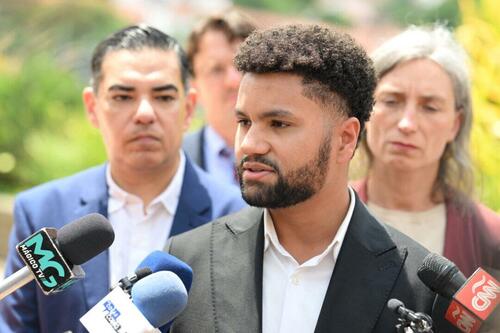 U.S. Rep. Maxwell Frost (D-Fla.) speaks during a press conference on the liberation of Salvadoran Kilmar Abrego Garcia in San Salvador, El Salvador, on April 21, 2025. Marvin Recinos/AFP via Getty Images
U.S. Rep. Maxwell Frost (D-Fla.) speaks during a press conference on the liberation of Salvadoran Kilmar Abrego Garcia in San Salvador, El Salvador, on April 21, 2025. Marvin Recinos/AFP via Getty Images
U.S. Reps. Yassamin Ansari (D-Ariz.), Maxine Dexter (D-Ore.), Robert Garcia (D-Calif.), and Maxwell Frost (D-Fla.) arrived in El Salvador on Sunday.
This comes after Sen. Chris Van Hollen (D-Md.) made the trip last week.
In a news conference Monday in El Salvador’s capital, the four representatives and Abrego Garcia’s lawyer said they were in El Salvador “demanding his safe return home.” The group said they hoped to continue to pressure authorities for his release, and that their petition to meet with Abrego Garcia was denied.
Frost said the representatives were in El Salvador to “build off the work” of Van Hollen and that they were inquiring about where Abrego Garcia was being held and under what conditions.
Chris Newman, a lawyer representing the deportee, added that his primary concern was Abrego Garcia’s access to counsel.
“We know nothing of Mr. Abrego Garcia’s whereabouts since the staged photo op on Thursday with Senator Van Hollen,” Newman said. “We demand to immediately know where he is and to have access to him.”
 Chris Newman, lawyer of the Abrego Garcia family, speaks during a press conference on the liberation of Salvadoran Kilmar Abrego Garcia in San Salvador, El Salvador, on April 21, 2025. Marvin Recinos/AFP via Getty Images
Chris Newman, lawyer of the Abrego Garcia family, speaks during a press conference on the liberation of Salvadoran Kilmar Abrego Garcia in San Salvador, El Salvador, on April 21, 2025. Marvin Recinos/AFP via Getty Images
The White House press office issued a statement Monday that said the past week “has shown Americans everything they need to know about Democrats’ priorities.”
The White House accused the representatives of “picking up their party’s mantle of prioritizing a deported illegal immigrant MS-13 gang member over the Americans they represent.”
MS-13 and other international criminal gangs were designated as terrorist organizations by the U.S. government earlier this year. Illegal immigrants who are suspected and confirmed members of such groups were prioritized for deportation by the Trump administration in March.
Van Hollen said he met with Abrego Garcia last week to check on his well-being on behalf of his family and to push for his release. The lawmaker was initially denied a visit with Abrego Garcia, but the Maryland senator was ultimately granted permission to talk with him and shared a photo of their meeting.
 Sen. Chris Van Hollen (D-Md.) speaks with Kilmar Abrego Garcia (L) in a hotel restaurant in San Salvador, El Salvador, on April 17, 2025. Press Office Senator Van Hollen via AP
Sen. Chris Van Hollen (D-Md.) speaks with Kilmar Abrego Garcia (L) in a hotel restaurant in San Salvador, El Salvador, on April 17, 2025. Press Office Senator Van Hollen via AP
Van Hollen said he was the first lawmaker to visit El Salvador on this case and suggested there would be more.
Earlier this month, Reps. Garcia and Frost sent a letter to House Oversight Committee Chairman James Comer (R-Ky.) to request authorization for a congressional delegation to visit the maximum-security prison in Tecoluca where Abrego Garcia was held.
After Comer rejected their request, the lawmakers planned their own independent trip.
According to Comer, an official congressional delegation trip for this purpose would be a waste of taxpayer money.
“Your request to visit a foreign MS-13 gang member in El Salvador on taxpayer dollars ... has been denied,” the Oversight Committee wrote in a post on X sharing Comer’s response to the request.
“Please respect the money of the American people,” Comer said in his letter.
Earlier this month, the U.S. Supreme Court ordered the Trump administration to “facilitate” the return of Kilmar Armando Abrego Garcia to the United States from a Salvadoran prison. The Trump administration initially said it had made an “administrative error” in deporting him to his home country despite a 2019 order preventing his deportation there, where the court determined that he would face danger.
Lawyers for the federal government said in court last week that they don’t have the power to secure Abrego Garcia’s release because he is in the custody of a foreign country. El Salvador President Nayib Bukele has publicly stated that he has no intention of returning him.
Abrego Garcia was in the United States illegally and had a deportation order before the 2019 court order determined that he would face danger in El Salvador.
According to documents released by the U.S. Justice Department, two separate judges and the Prince George’s County Police Department had found that he was affiliated with the MS-13 gang based in part on “a past proven and reliable source” who said that Garcia was an “active member of MS-13 with the Westerns clique” with the rank of “Chequeo.” Garcia was also wearing clothing known to be affiliated with gang membership, according to the documents.
He was also questioned by the Tennessee Highway Patrol and suspected of being involved in human trafficking.
Documents released by DHS also reveal that Abrego Garcia's wife sought a restraining order for domestic violence a year before the traffic stop.
In May 2021, a document signed by a judge described allegations of a "violent encounter." The case was eventually dismissed when his wife, Jennifer Vasquez, failed to appear for a final court hearing in June 2021.
According to White House press secretary Karoline Leavitt, even if Abrego Garcia was returned to the United States, “he would immediately be deported again.”
The Associated Press contributed to this report.
From NTD News
-
Site: Zero HedgeUkraine Finally Squeezed Out Of Kursk As Russian Army Retakes Key MonasteryTyler Durden Tue, 04/22/2025 - 10:40
Tass news agency is reporting that Moscow forces are poised to liberate the last village still held by Ukraine forces in the southwestern Kursk region. This final battle will bring 100% of Kursk oblast back under full Russian control.
"Our soldiers liberated the St. Nicholas Belogorsky Monastery in Gornal during fighting," a source was quoted in the report as saying. The operation which focused on regaining the 17th century monastery and its environs took "more than a week."
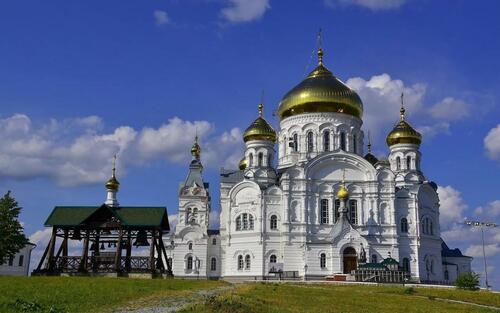 St Nicholas Belogorsky Monastery in Kursk. Source Michael Ovseychik/iStock/The Telegraph
St Nicholas Belogorsky Monastery in Kursk. Source Michael Ovseychik/iStock/The Telegraph
"The resistance of the Ukrainian Armed Forces has been broken," the source was quoted further as saying, and alleged that the Ukrainian troops were using the monastery as a "military facility."
The remaining Ukrainian troops in Kursk appear to be squeezed and in the throes of their final effort to hold on to some Russian territory inside the border, as the liberated monastery is on the northeastern edge of Gornal and located less than 30 kilometers to the northeast of the city of Sumy inside Ukraine.
Russia’s Chief of the General Staff Valery Gerasimov informed President Vladimir Putin on Saturday that 99.5% of the Kursk region has been regained by Russian forces.
At the height of the cross-border offensive which began last August, Ukraine's military had seized just over 530 square miles, but regional reports now say that significant figure is down to less than just 20 square miles.
The operation to retake Kursk has clearly gained new impetus over the last several weeks, and likely Putin wants to achieve its full liberation in order to avoid negotiating an exchange of territory. What little leverage Zelensky had has now been effectively quashed.
Konstantin Remchukov, the editor of the Nezavisimaya Gazeta newspaper, wrote Sunday that "As soon as the last 0.5% is liberated, then the troops can stop where this news finds them." And so these Russian troops can also be diverted to the main battlefield in eastern Ukraine, where Moscow forces also have the forward momentum.
Meanwhile in fresh Wednesday statements, Putin spokesman Dmitry Peskov made clear the Kremlin is no rush to push through a ceasefire deal. The conflict "cannot be expected to be resolved overnight," he said.
"We continue our contacts with the Americans through various channels. The issue of the [Ukrainian] settlement is extremely complex, of course, so it is hardly possible to set some hard deadlines and try to rush the resolution of the conflict into a shortened timeframe. This would be an exercise in futility," he told broadcaster VGTRK.
Above: Map showing close proximity of the monastery to the Ukrainian border.
"But the work [on settling the Ukrainian crisis] is indeed ongoing," Peskov stated. Zelensky has accused the Russians of not really being interested in peace, and has alleged it's just using negotiations to distract and make advances on the battlefield while trying to improve its reputation internationally.
-
Site: Mises InstituteWhile most of Japan‘s politicians have backed Ukraine in the war with Russia, nonetheless, at least one legislator is willing to see things differently. Suzuki Muneo explains his views in this interview.
-
Site: OnePeterFive

A century ago, on April 22, 1925, a suburb of Paris witnessed the passing of André Caplet, a composer and conductor whose unique artistry distinguished him from his contemporaries. As the French poet and Germanist Maurice Boucher († 1977) astutely observed, Caplet “resembled none of his contemporaries and […] represented in his own way and in his own place an art that was always wide-awake and…
-
Site: Steyn OnlineProgramming note: Tomorrow, Wednesday, at 3pm North American Eastern (8pm British Summer Time), I hope to be here for our regular midweek Clubland Q&A, taking questions from Mark Steyn Club listeners around the world. Hope you can swing by. ~On Sunday
-
Site: Ron Paul Institute - Featured Articles
CNN in a recent article has reported that:
The United States could end its efforts on ending the Ukrainian conflict within “days” if there are no signs of progress, US Secretary of State Marco Rubio warned Friday.
‘If it is not possible to end the war in Ukraine, we need to move on,’ he told reporters before departing Paris, where he had held high-level talks with European and Ukrainian officials. ‘We need to determine very quickly now, and I’m talking about a matter of days, whether or not this is doable,’ he said.This is framed as if the US is serving as some sort of mediator between Russia and Ukraine. In reality, the US is one of two primary parties to the conflict – the other being Russia, with whom this war was provoked.
A US War on Russia Since the Cold War Ended…
The US had since the end of the Cold War invested billions of dollars in political interference within Ukraine, including regime change operations attempted in 2004 and successful regime change finally taking place in 2014. From 2014 onward, Ukraine was transformed into a military proxy of the United States aimed specifically to threaten the Russian Federation, just as a politically captured Georgia in 2003 was used to attack Russian peacekeeping forces in 2008.
The growing security threat this posed to Moscow precipitated the launching of Russia’s February 2022 Special Military Operation (SMO) and the subsequent fighting that has continued ever since.
A series of articles from the Western media itself has revealed over recent years the degree to which the US had not only politically captured Ukraine, but also institutionally captured its military and intelligence agencies, reconfiguring them to operate as armed extensions of the US along Ukraine’s border with Russia, and even across it within Russia itself.
Among these admissions is the New York Times’ February 2024 article titled, “The Spy War: How the C.I.A. Secretly Helps Ukraine Fight Putin,” which admits to, “a C.I.A.-supported network of spy bases constructed in the past eight years that includes 12 secret locations along the Russian border.”
The article would also admit:
Around 2016, the C.I.A. began training an elite Ukrainian commando force — known as Unit 2245 — which captured Russian drones and communications gear so that C.I.A. technicians could reverse-engineer them and crack Moscow’s encryption systems. (One officer in the unit was Kyrylo Budanov, now the general leading Ukraine’s military intelligence.)
And the C.I.A. also helped train a new generation of Ukrainian spies who operated inside Russia, across Europe, and in Cuba and other places where the Russians have a large presence.
While the New York Times tries to insist the CIA did not help Ukrainians conduct offensive lethal operations, it later admits CIA-trained Unit 2245 not only conducted lethal operations, but did so within Russian territory, claiming:
At the time, the future head of Ukraine’s military intelligence agency, General Budanov, was a rising star in Unit 2245. He was known for daring operations behind enemy lines and had deep ties to the C.I.A. The agency had trained him and also taken the extraordinary step of sending him for rehabilitation to Walter Reed National Military Medical Center in Maryland after he was shot in the right arm during fighting in the Donbas.
Disguised in Russian uniforms, then-Lt. Col. Budanov led commandos across a narrow gulf in inflatable speedboats, landing at night in Crimea.
But an elite Russian commando unit was waiting for them. The Ukrainians fought back, killing several Russian fighters, including the son of a general, before retreating to the shoreline, plunging into the sea and swimming for hours to Ukrainian-controlled territory.In other words, the US was training, equipping, arming, and directing deadly operations out of Ukraine into Russian-held territory before Russia launched its 2022 SMO.
The same article admitted that these CIA officers deployed to and overseeing operations in Ukraine began playing a central role after Russia launched its SMO in 2022.
The NYT would admit:
Within weeks, the C.I.A. had returned to Kyiv, and the agency sent in scores of new officers to help the Ukrainians. A senior U.S. official said of the C.I.A.’s sizable presence, “Are they pulling triggers? No. Are they helping with targeting? Absolutely.”
Some of the C.I.A. officers were deployed to Ukrainian bases. They reviewed lists of potential Russian targets that the Ukrainians were preparing to strike, comparing the information that the Ukrainians had with U.S. intelligence to ensure that it was accurate.Subsequent articles by the New York Times would expand upon just how deeply involved the US has been in the fighting – making the war for all intents and purposes an American war fought through the Ukrainians.
Washington’s War on Russia
A March 2025 New York Times article titled, “The Partnership: The Secret History of the War in Ukraine,” would explain that not only has the US provided tens of billions of US dollars worth of military equipment, weapons, and ammunition, including, “a half-billion rounds of small-arms ammunition and grenades, 10,000 Javelin antiarmor weapons, 3,000 Stinger antiaircraft systems, 272 howitzers, 76 tanks, 40 High Mobility Artillery Rocket Systems, 20 Mi-17 helicopters and three Patriot air defense batteries,” but that the US military itself has been (and still is) playing a central role in picking and striking at targets on both sides of the Ukrainian-Russian border.
It admitted that it was US intelligence used to carry out many of Ukraine’s most successful attacks on Russian military headquarters including at the Crimean port of Sevastopol which had been under Russian control even before the 2014 US overthrow of Ukraine and Crimea’s subsequent reunification with Russia.
Much of Washington’s control over the conflict was coordinated through a mission command center established in Wiesbaden, Germany. While many of Ukraine’s military operations were attributed to Ukrainian planning, the New York Times has since revealed it was instead overseen by the US and other NATO members through Wiesbaden.
The article would explain:
Side by side in Wiesbaden’s mission command center, American and Ukrainian officers planned Kyiv’s counteroffensives. A vast American intelligence-collection effort both guided big-picture battle strategy and funneled precise targeting information down to Ukrainian soldiers in the field.
One European intelligence chief recalled being taken aback to learn how deeply enmeshed his N.A.T.O. counterparts had become in Ukrainian operations. “They are part of the kill chain now,” he said.The New York Times also admitted:
Military and C.I.A. officers in Wiesbaden helped plan and support a campaign of Ukrainian strikes in Russian-annexed Crimea. Finally, the military and then the C.I.A. received the green light to enable pinpoint strikes deep inside Russia itself.
The article admits that Western military officers – not Ukrainians – made the final decision regarding what targets would be hit and how.
This included the use of US-provided M777 howitzers and the HIMARS multiple launch rocket system.
The New York Times admitted:
Wiesbaden would oversee each HIMARS strike. [US] General Donahue and his aides would review the Ukrainians’ target lists and advise them on positioning their launchers and timing their strikes. The Ukrainians were supposed to only use coordinates the Americans provided. To fire a warhead, HIMARS operators needed a special electronic key card, which the Americans could deactivate anytime.
Every large-scale Ukrainian operation, including the 2022 Kherson and Kharkov offensives as well as the failed 2023 offensive, were planned, organized, and directed by US military officers from Wiesbaden. This also included the creation of new Ukrainian brigades, the New York Times admits was overseen by US Lieutenant General Antonio Aguto Jr.
It is also revealed that it wasn’t Ukraine who asked for longer range weapons like the Army Tactical Missile System (ATACMS), it was US generals.
The New York Times admits:
Generals Cavoli and Aguto recommended the next quantum leap, giving the Ukrainians Army Tactical Missile Systems — missiles, known as ATACMS, that can travel up to 190 miles — to make it harder for Russian forces in Crimea to help defend Melitopol.
It was also revealed that Ukrainian commanders realized the US-planned and directed 2023 offensive was doomed during its earliest phase, yet US commanders demanded Ukraine “press on.”
Various options were formulated to try to salvage the failed offensive, with the New York Times attributing its failure to a number of factors, including infighting among Ukrainian commanders and even tension between Ukrainian commanders and their US handlers. In reality, the offensive failed because of the realities of material limitations on Western military industrial production and their inability to fight the type of war of attrition Russia had prepared for years in advance and imposed on them.
Toward the end of the New York Times article, it admitted that, “the coalition simply couldn’t provide all the equipment for a major counteroffensive. Nor could the Ukrainians build an army big enough to mount one.”
Various operations were described throughout the article including US-British attempts to destroy the Kerch Bridge connecting Crimea to the rest of Russia, which all ended in failure.
While the article attempts to blame the gradual draw down of US support for Ukraine on the election of President Donald Trump and his desire for “peace,” it is clear the US simply exhausted the means to continue waging a proxy war against a Russian military much better able to replace its losses than Ukraine and its Western sponsors.
The New York Times essentially admits this was a US war waged against Russia, simply using Ukraine as intermediaries.
Every major military operation down to specific targets to be struck and which US-European-made and provided weapon system to use to strike it with was made by American – not Ukrainian generals.
Playing “Mediator” While Seeking to Freeze a Failed Proxy War
Today, the US government is attempting to play the role of a frustrated mediator trying to broker peace between Ukraine and Russia, when in reality this was always a war between the US and Russia.
In reality, current US Secretary of Defense Pete Hegseth, in a February 12, 2025 speech, discussed “European and non-European troops” being sent into Ukraine as a “security guarantee” which would in practice either freeze the conflict or precipitate direct hostilities between Russia and Europe.
Secretary Hegseth also instructed Europe the next steps regarding Ukraine would be “donating more ammunition and equipment” to Ukraine, as well as “expanding your defense industrial base.”
What Secretary Hegseth actually laid out was a directive not toward peace in Ukraine, but to once again freeze the conflict as the US and Europe did during the Minsk agreements, during which the US and Europe could expand their own military industrial bases to match or exceed Russian production and rearm and reorganize Ukrainian forces to resume hostilities again in the future when factors lean in Washington’s favor, not Moscow’s.
Secretary of State Marco Rubio’s predictable boredom with peace talks with Russia signals the US’ readiness to transfer responsibility for its proxy war fully onto Europe as it pivots toward a much more dangerous confrontation with Russia’s ally to the east – China.
The Trump administration and the Biden administration before it never had any intention of addressing the actual cause of the conflict in Ukraine – NATO’s expansion up to and all along Russia’s borders with every intention of inevitably absorbing Russia itself. Because of this, genuine peace was never possible regardless of the Trump administration’s public rhetoric and empty gestures toward Russia.
While the Trump administration has paid lip service to NATO expansion, its only decision regarding NATO specifically has been to demand NATO members more than double funding for NATO.
Russia, for its part, has left the door open for honest negotiations and has provided the United States ample exit ramps from both an unwinnable proxy war and indefinite confrontation with Russia into the future. The US is obviously not interested. Russia had, throughout “peace talks” with the US, continued its war of attrition against Ukrainian forces, continuing the process the New York Times describes as the central contributing factor for the proxy war’s current failure.
The real question that remains is whether or not Russia can continue this process at a faster and more effective rate than the US and Europe can continue “donating more ammunition and equipment” to Ukraine while attempting to expand their “defense industrial bases.” Only time will tell for sure.
As Syria has demonstrated, a proxy war the US has lost one moment can be frozen, revisited, and eventually won if it is able to overextend designated adversaries like Russia and Iran for long enough and extensively enough elsewhere. The US has already embarked upon armed conflict with Yemen and is threatening war with Iran – forcing Russia to once again make difficult decisions regarding where it invests finite military resources versus the seemingly infinite US capacity to create instability and conflict wordwide.
The survival and success of multipolarism depends on the multipolar world cooperating against US attempts to reassert American primacy – not only through direct and proxy war, but also through economic coercion and political interference – and to understand that a US war on Russia in Ukraine or a proxy war waged against Syria in the Middle East – is, in fact, a war against the rise of multipolarism altogether and the promise of peace and prosperity it offers.
Reprinted with permission from New Eastern Outlook.
-
Site: The Orthosphere
-
Site: Catholic Herald
ROME – Following the death of Pope Francis on Easter Monday, the Vatican has announced that his funeral will be held Saturday morning in Rome at St. Peter’s Basilica, before his coffin is transferred to a different location, per his special request, for his entombment.
The pope died Monday at 7:35am local time after experiencing a cerebral stroke that subsequently led to a coma, and cardiocirculatory failure.
His death came as a shock to many, given that he had made an appearance for Easter Sunday, giving his traditional noontime Urbi et Orbi blessing and taking his first ride in the popemobile to greet and bless faithful and pilgrims in St. Peter’s Square.
On Tuesday the Vatican announced that on Wednesday, April 23, at 9a.m. local time, Francis’s coffin will be transferred from the chapel inside the Vatican’s Saint Martha guesthouse, where he resided for the past 12 years, to St. Peter’s Basilica after a brief prayer by the papal Camerlegno, Cardinal Kevin Farrell.
Once inside the basilica, Farrell as Camerlegno, who governs the church during the sede vecante until a new pope is elected, will preside over the Liturgy of the Word, after which visits to the pope’s body will begin for his official lying in state.
Pope Francis’s funeral will be held Saturday, April 26, at 10a.m. local time, in St. Peter’s Square, and it will be presided over by Italian Cardinal Giovanni Battista Re, Dean of the College of Cardinals.
In addition to flocks of faithful from around the world, his funeral Mass is expected to be attended by various dignitaries and heads of state from around the world. It is unclear if United States President Donald Trump will attend the Mass.
U.S. Vice President JD Vance had a private meeting with the pope Sunday, less than 24 hours before his death, and is believed to be the last official appointment the pope had prior to his stroke and subsequent passing.
After Pope Francis’s funeral Mass, his coffin will be transferred to the Roman Basilica of Saint Mary Major, his favorite of the Roman basilicas which he visited before and after every international trip to pray in front of the famed Maria, Salus Populi Romani (Mary, health of the Roman people) icon, and where he said he wants to be buried.
In his last testament, Francis said he wished to be buried in a tomb prepared in the Pauline Chapel of the basilica, where the Salus Populi Romani icon is housed, without extravagant décor, and with the simple inscription of his papal name in Latin, Franciscus.
“I have always entrusted my life and episcopal ministry to the Mother of Our Lord, Mary Most Holy. For this reason, I ask that my mortal remains rest awaiting the day of resurrection in the Basilica of Saint Mary Major,” he said in the testament.
Francis voiced his desire that “my last earthly journey conclude precisely in this ancient Marian sanctuary, where I went to pray at the beginning and end of every apostolic journey to confidently entrust my intentions to the Immaculate Mother and to thank her for her docile and maternal care,” he said.
A rosary will be said for Pope Francis in St. Peter’s Square Tuesday night at 7:30p.m. local time, led by Re.
Follow Elise Ann Allen on X: @eliseannallen
(The late Pope Francis’ body lies in the chapel of the Casa Santa Marta | VATICAN MEDIA Divisione Foto)

The post Funeral for Pope Francis to be held on Saturday morning in Rome first appeared on Catholic Herald.
The post Funeral for Pope Francis to be held on Saturday morning in Rome appeared first on Catholic Herald.
-
Site: The Orthosphere

Postmodern architecture is supposed to be a medley of past styles and architectural ideas; a recombination rather than original or the result of a unified aesthetic vision. Westworld is explicitly modeled on the Michael Crichton movie, but borrows a dozen or more other influences and melds them together. Do Androids Dream of Electric Sheep by Philip K. Dick was published in 1968, four years before Westworld the movie. But, then the film Blade Runner, released in 1982, based on Do Androids Dream of Electric Sheep, came ten years after Westworld the movie. Blade runners are human bounty hunters who track down “replicants” (organic robots) who have illegally come to Earth in order to “retire” them, in a rather marvelously dark euphemism. Replicants must remain off-world. Ridley Scott, the director, and Harrison Ford agreed that Ford’s character Rick Deckard, a blade runner, would not be a replicant himself, or at least that his status as human or not would remain ambiguous, or so Ford thought. Scott, either from the outset or later on, for some reason favored the replicant interpretation and later he added extra scenes in subsequent releases of the movie to try to force the interpretation that Deckard was himself a replicant. Deckard was definitely not a replicant in the novel, though he has a fellow blade runner who kills a replicant so sadistically Deckard thinks the colleague might be one himself. Replicants do not have human empathy – something the Voigt-Kampf replicant detecting test exploits – and the killing seemed psychopathic. In fact, Deckard’s workmate simply has no empathy for replicants, excluding them from his moral in-group. In the movie, Roy Baty manages to transcend this empathy limitation, refraining from killing Deckard out of pity and love for life. One boundary that none of the replicants can change, however, is replicants’ four-year life span. This stops replicants from being much of a threat to humans. Even if they return to Earth, they will not be around for long. This truncated mortality is the opposite of Westworld’s hosts’ infinite life span.
In Westworld Season 1, the person with the most hands on responsibility for handling the “hosts” (organic robots) is Bernard, played by Jeffery Wright. We find out late in the season that Bernard is himself a host as a plot twist – the equivalent of Deckard as replicant. Weirdly, Bernard is highly robotic right from the beginning. His facial expression changes little, his voice remains level, tending towards a monotone in the manner of a Lex Fridman (self-described robot resembler) or a Sam Harris, he does not get angry (until he finds out Ford made him kill someone) and the romantic chemistry between him and the head of quality control, Therese Cullen, played by Sidse Babett Knudsen, with whom he is supposed to be having a sexual relationship, nonexistent. (It would be nice to know if this failing was intentional or not.) He is capable of staring off into the distance and feeling sad about the supposed death of his imaginary son – and this provides the narrative reason or excuse for his being emotionally shut down. Bernard’s roboticism is odd because all the other hosts have been designed to be much more human and do not exhibit his flat affect.
See next post for “Continue reading”
-
Site: AsiaNews.itThe archbishop emeritus of Bombay talks about the pontiff who picked him to be the face of Asia in the Council of Cardinals. He participated in all the meetings, inviting the cardinals 'to discuss, to differ and to argue.' He was a person of 'deep faith' who 'preached the Gospel undiluted.' 'He would say 'why be afraid of death' 'The Lord needs me here, the Lord wants me here and the moment the Lord does not want me he will take me away'.'
-
Site: PaulCraigRoberts.org
Putin’s Never-ending Ever-widening War
EU and UK preparing naval blockade of Russia
Yesterday Russia’s Maritime Board stated that Russia is facing escalating threats and challenges at sea amid growing geopolitical tensions.
https://www.rt.com/russia/616084-eu-uk-russia-naval-blockade/
-
Site: PaulCraigRoberts.org
Dear Readers, the illegal oppression to which the “democratic” state of Germany, an offspring of Nazi tyranny, is subjecting Dr. Reiner Fuellmich, is identical to the illegal persecution of Julian Assange by the UK and US governments.
What Western peoples do not know, and do not want to know, is that they no longer live in democracies. They live in tyrannies in which they have no reliable rights. The orchestrated “Covid pandemic” perfectly demonstrated that civil liberty is totally dead in the Western World.
US President Donald Trump, a courageous man unlike the cowards of our time, has challenged the corrupt American and European Establishment. He has undertaken to renew the principles and values that made the Western World great. But has he the power? It remains to be seen, and I support him.
However, it took Americans too long to realize and to acknowledge their peril. Trump has been handed the challenge after the rot of every American value and principle has been institutionalized, set in stone, for so long that the institutionalized government is against him, the judiciary is against him, the Democrat Party and the RINO Republicans are against him, the law and journalism schools are against him, the universities, the print, TV and NPR media are against him. The Establishment’s opposition to Trump expresses their opposition to democracy.
Only the dispossessed majority are for Trump, and they have no power. The Democrats have proven that it is easy to steal the vote from them, to arrest them as insurrectionists, to seize their children from them, and to have them fired from their jobs because they gave voice to unapproved statements. The Biden regime had succeeded, and carried corporate America with it, in having a government in which there were no white heterosexual gentile males in senior positions and in which promotions of white heterosexual males in the military were put on hold in order to advance DEI. The blatant discrimination against white heterosexual males was a violation of the 14th Amendment and the 1964 Civil Rights Act. And the judiciary did nothing about it. But the judiciary is active in preventing the deportation of illegals who have no right to be in the US.
Considering the extraordinary powers arrayed against Trump only violence can prevail over the powerful anti-American Establishment. The American people do not understand this, and so Trump hasn’t the power to prevail.
When the Democrats return to power, Americans will experience tyranny not seen since Stalin. Like Cicero, who did his best to save Rome, Trump and his supporters will be hunted down and destroyed. All white heterosexuals will be suppressed, reduced to second class citizenship, and regarded as an unreliable element always under government surveillance. We will be put on terrorist watch lists and designated a terrorist group. Already some years ago the Secretary of Homeland Security, a Nazi term, said that the focus had changed from the war on terror to “domestic terrorism” by which was meant white gentile heterosexuals who are pro-family, pro-life, and Christian. Democrat presidential candidate Hillary Clinton gave traditional Americans their term of demonization when she declared them to be the “Trump deplorables.”
Already, the tyrannical government of Germany, an alleged “democracy,” has exceeded in its treatment of Dr. Reiner Fuellmich the invidious attacks by the US and UK governments on Julian Assange.
When truth cannot be spoken and truth-tellers are imprisoned, freedom is totally dead. This is the situation today throughout the Western World. Can Trump really resurrect the West from the dead?
The persecution of Dr. Reiner Fuellmich: the biggest judicial scandal ever seen in Germany
by Seba Terribilini and Cynthia Salatino
April 17, 2025
Dr. Reiner Fuellmich is known and respected internationally for his work as a consumer defense lawyer and for having won major lawsuits against corporate giants such as Volkswagen, Kühne & Nagel, and Deutsche Bank. He was one of the first persons who recognized that the COVID measures constituted crimes against humanity and decided, together with three other lawyers, to create the Corona Investigative Committee, whose aim was to shed light on the actions of governments, public institutions, and the medical community in the context of the so- called “pandemic”.
Thanks to his brilliant investigative work and after having consulted more than 150 scientists and experts around the world in all fields, as well as numerous whistleblowers (from Pfizer, WHO, CDC, UN), he was able to collect an abundance of evidence of what he calls “the biggest crime ever perpetrated against humanity.”
He was ready to take action.
However, the German secret services, in cooperation with Göttingen public prosecutor Simon Phillip John and Fuellmich’s accusers, had already decided to construct a case against Fuellmich, aimed at stopping him.
He is accused of having embezzled 700,000 euro but, in truth, he did not. The imminent threat of seizure of the Corona Investigative Committee’s bank accounts by the German government during the fallout of the COVID pandemic, along with the risk of no longer being able to use the funds raised by private donations to carry out their investigative work, Reiner Fuellmich and Viviane Fischer took steps to protect those funds. They purchased 1 million euros worth of gold (current value: 1.8 million euros) and each took out personal loans (700.000 euros to Reiner Fuellmich, and 100.000 euros to Viviane Fischer). Their loan agreements were documented in written, signed contracts.
When the defense demonstrated the erroneousness of the original accusation which asserted that Fuellmich had no authority to take a personal loan without the other committee member’s consent, the judge had to invent a new accusation in order to justify Fuellmich’s continued imprisonment. The judge thus declared that that the loans were “fake”.
What is interesting is that the previous Göttingen lead prosecutor Reinicke, who had been asked by the secret services to open an investigation on Fuellmich, had clearly stated that there were no grounds upon which to investigate him, and archived the case in June 2022. Merely two and a half months later, a young, inexperienced prosecutor by the name of Simon Phillip John was transferred from Hanover to Göttingen and given the task to do the dirty work that Reinicke had previously deemed unjustified.
Judge Carsten Schindler, as well as prosecutor John are, without any shadow of a doubt, following someone else’s instructions.
Dr. Reiner Fuellmich has been unlawfully held in pre-trial detention in the German maximum-security prison in Rosdorf for 18 months. This, despite the fact that the maximum term for pre-trial detention in Germany is 6 months. This, after his having been lured under false pretenses, subsequently abducted in Mexico, and then deported to Germany –without an international arrest warrant NOR a formal extradition order– where he was then arrested and imprisoned.
The circumstances of his illegal arrest and subsequent mistreatment in prison are very concerning.
From June 2024 until December 2024, Reiner Fuellmich was placed in solitary confinement. The official reason was that he was providing fellow inmates with legal advice. Fuellmich was also subjected to various forms of abuse, in clear violation of his human rights: physical and psychological mistreatment including prolonged solitary confinement, deprived of sunlight, deprived of outdoor physical activity, deprived of sleep, forced to choose between taking a shower or having his one-hour outdoors, and even prohibited from calling his lawyers. Aside from their brief (and monitored) telephone calls on Skype, he has not seen his wife since his arrest.
He is only permitted three hours per month of visits and telephone calls.
On top of that, he has been denied adequate medical care, including simple access to vitamins.
Moreover, Reiner was not allowed to visit his dying mother nor attend her funeral.
Both the inhumane prison conditions as well as the manner in which his trial is being conducted raise serious doubts about the level of respect for fundamental rights in the German judicial system.
From June 10, 2024 to this day, Reiner Fuellmich, after being body-searched, is brought to the court and back to prison in shackles and handcuffs, escorted by armed security officers in armored vehicles, as if he were a serial killer!
He is being denied a fair trial, in that any motions presented by his defense lawyers are rejected without explanation. As of July 2024, Judge Schindler ordered that the defense motions and arguments, instead of being read aloud to the court, were from then on to be presented in writing only, thus impeding court observers from understanding and properly documenting the proceedings. These same court spectators have been subject to threats, as have Fuellmich’s defense lawyers.
In addition to not permitting defense witnesses to take the stand, Judge Schindler steadfastly refuses to allow the person who actually pocketed the funds to testify in court.
This “kangaroo court” proceeding” is now in its final phase. As we write this, the defense lawyers have completed their closing statements, and Fuellmich has begun to make his final, closing statement before the court, which, in order to silence him, interrupted and admonished him at least 12 times. It is feared that the court may impose upon Fuellmich a time limit for the presentation of his final defense statement, as they did to his defense lawyers, forcing them shorten their closing statements.
In the course of 51 hearings, what we have witnessed is nothing less than an egregious case of obstruction of justice –a criminal offense in Germany– which confirms the intent of the German secret services as stated in their dossier on Reiner Fuellmich. This dossier was presented to the court by one of Fuellmich’s defense lawyers. It specified that Fuellmich was to be stopped “at all costs”; that “it is necessary to prepare a criminal case against Fuellmich, [including the] collaboration of prosecutors and suitable third parties”; and recommending “the recruitment and involvement of trusted persons amongst Fuellmich’s closest circle.”
It was also their stated objective to convict Fuellmich; that “the possibility of [him] obtaining a politically exposed position must be prevented by any means”. This dossier, provided by a whistleblower, demonstrates that Reiner Fuellmich was already under special surveillance as far back as 2021.
That said, it is beyond a shadow of a doubt that Reiner Fuellmich had to be stopped in order to prevent him from continuing his precious investigational work exposing the truth regarding the “pandemic” as well as the so-called “vaccines”.
Fuellmich is clearly a political prisoner, punished for having spoken the truth. His case demands the attention of international human rights organizations, as well as the indignation of worldwide public opinion.
Pre-trial detention must never be used as an instrument to defer, suppress, or completely substitute the justice system in the form of a legitimized punishment without a sentence.
Justice, free speech, and respect for fundamental human rights are the pillars of a democratic state, not only for but especially for those individuals who raise uncomfortable questions and have the courage to speak up.
-
Site: PaulCraigRoberts.org
New Mexico Democrat Judge Resigns After ICE Arrests Alleged Tren de Aragua Gang Member in His Home
As insouciant Americans should know by now, the Democrats and their puppet judges are aligned with immigrant-invaders against Americans.
-
Site: PaulCraigRoberts.org



